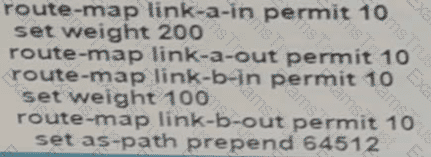Refer to the exhibit.

R1 is connected with R2 via GigabitEthernet0/0, and R2 cannot ping R1. What action will fix the issue?
A customer reports to the support desk that they cannot print from their PC to the local printer id:401987778. Which tool must be used to diagnose the issue using Cisco DNA Center Assurance?
Refer to the exhibits.
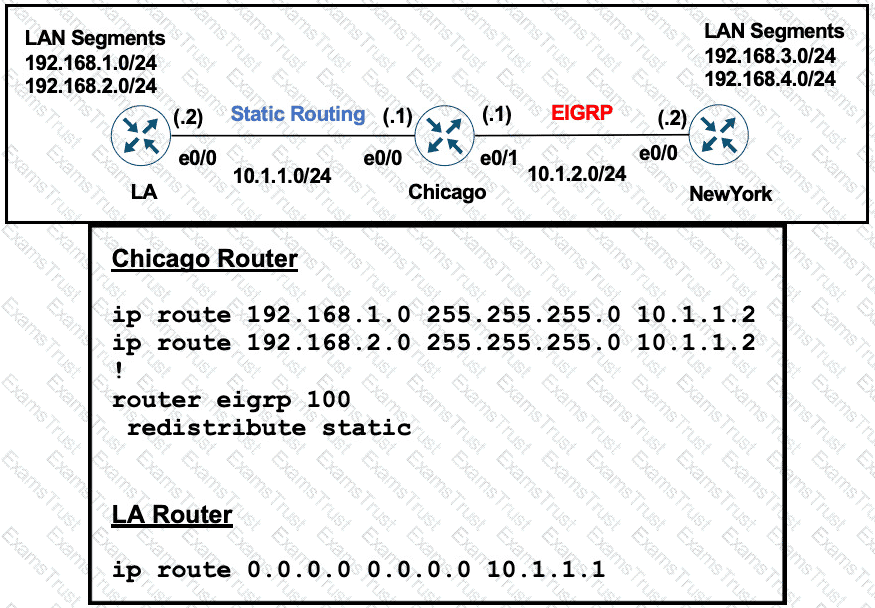
A user on the 192.168.1.0/24 network can successfully ping 192.168.3.1, but the administrator cannot ping 192.168.3.1 from the LA router. Which set of configurations fixes the issue?
A)

B)

C)

D)

Refer to the exhibits.
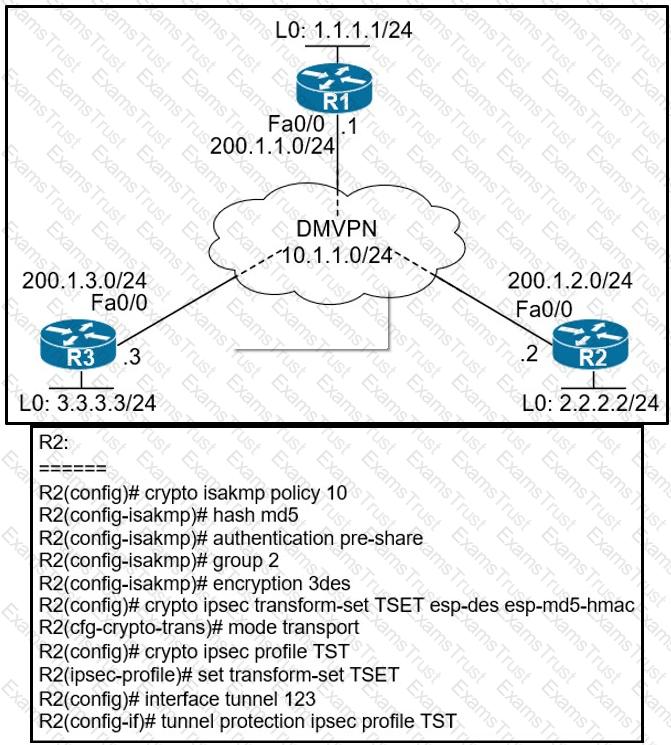
When DMVPN is configured, which configuration allows spoke-to-spoke communication using loopback as a tunnel source?
What does the PE router convert the Ipv4 prefix to within an MPLS VPN?
An engineer configured a Cisco router to send reliable and encrypted notifications for any events to the management server. It was noticed that the notification messages are reliable but not encrypted. Which action resolves the issue?
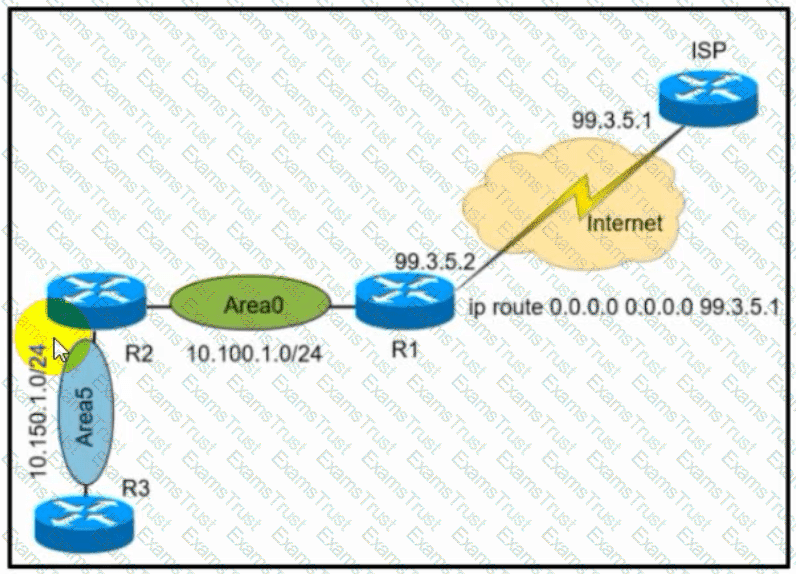
Refer to the exhibit. A network administrator redistributed the default static route into OSPF toward all internal routers to reach to Internet. Which set of commands restores reachability to the Internet by internal routers?
Refer to the exhibit.
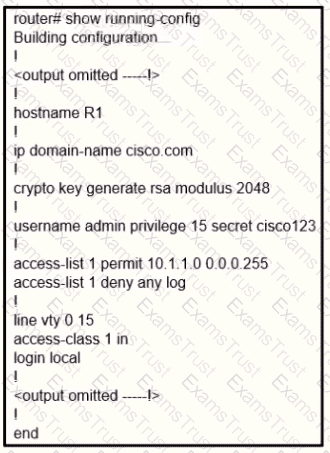
A user cannot SSH to the router. What action must be taken to resolve this issue?
Refer to the exhibit.
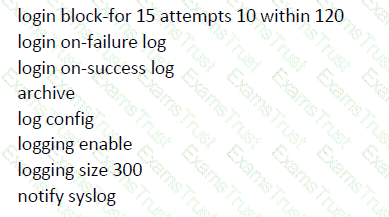

The administrator can see the traps for the failed login attempts, but cannot see the traps of successful login attempts. What command is needed to resolve the issue?
Exhibit:
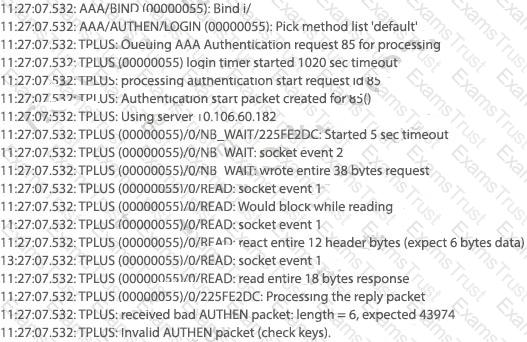
Which action resolves the authentication problem?
A DMVPN single hub topology is using IPsec + mGRE with OSPF. What should be configured on the hub to ensure it will be the designated router?
Refer to the exhibit.
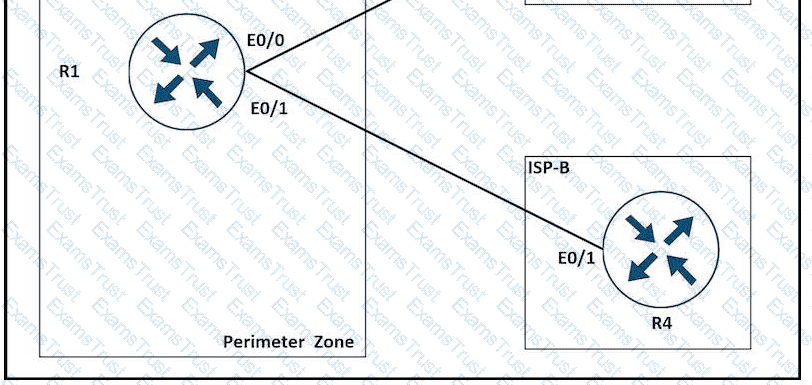
A network is under a cyberattack. A network engineer connected to R1 by SSH and enabled the terminal monitor via SSH session to find the source and destination of the attack. The session was flooded with messages, which made it impossible for the engineer to troubleshoot the issue. Which command resolves this issue on R1?
When determining if a system is capable of support, what is the minimum time spacing required for a BFD control packet to receive once a control packet is arrived?
Which Ipv6 first-hop security feature helps to minimize denial of service attacks?
Refer to the exhibit.
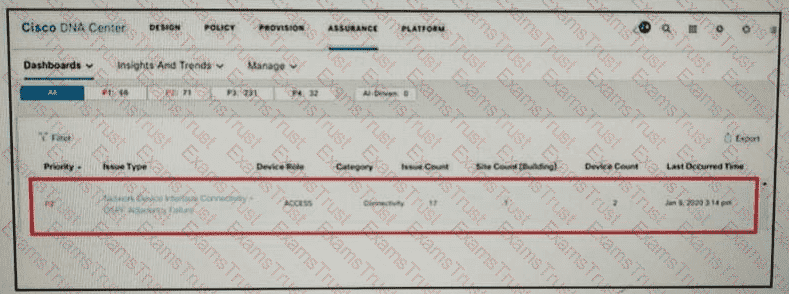
A network administrator is using the DNA Assurance Dashboard panel to troubleshoot an OSPF adjacency that failed between Edge_NYC interface GigabitEthernet1/3 with Neighbor Edge_SNJ. The administrator observes that the neighborship is stuck in exstart state. How does the administrator fix this issue?
Refer to the exhibit.
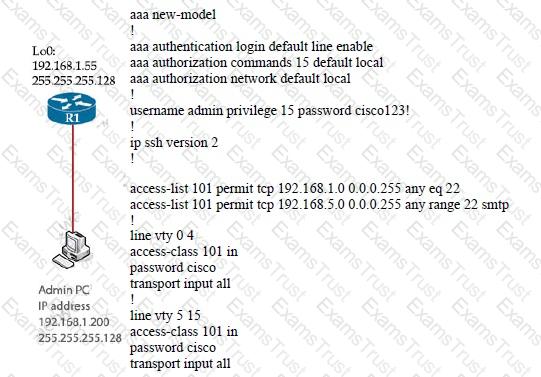
The administrator successfully logs into R1 but cannot access privileged mode commands. What should be configured to resolve the issue?
What are two functions of IPv6 Source Guard? (Choose two.)
Refer to the exhibit.
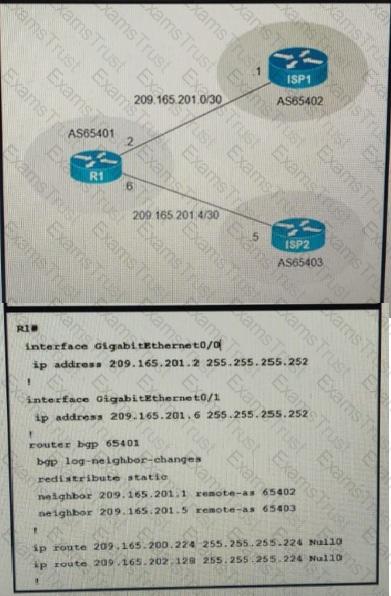
A company with autonomous system number AS65401 has obtained IP address block 209.165.200.224/27 fro, ARIN. The company needed more IP addresses and was assigned block209.165.202.128/27 from ISP2. An engineer is ISP1 reports they are receiving ISP2 routes from AS65401. Which configuration onR1 resolves the issue?
A)

B)

C)

D)

When configuring Control Plane Policing on a router to protect it from malicious traffic, an engineer observes that the configured routing protocols start flapping on
that device. Which action in the Control Plane Policy prevents this problem in a production environment while achieving the security objective?
Refer to the exhibit.
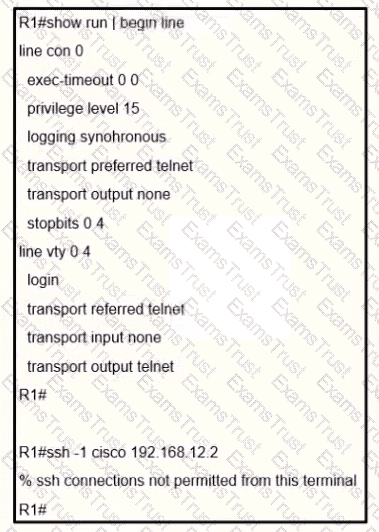
An engineer receives this error message when trying to access another router in-band from the serial interface connected to the console of R1. Which configuration is needed on R1 to resolve this issue?
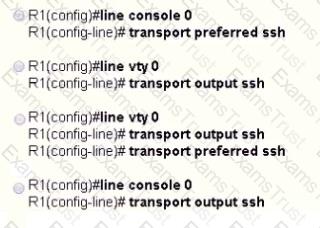
Refer to Exhibit.
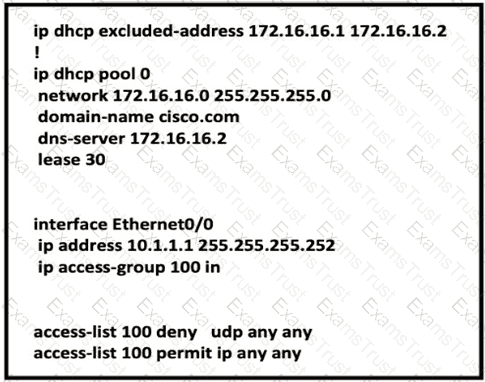
Which two configurations allow clients to get dynamic ip addresses assigned?
An engineer configured a DHCP server for Cisco IP phones to download its configuration from a TFTP server, but the IP phones failed to toad the configuration What must be configured to resolve the issue?
Refer to the exhibit.

When monitoring an IPv6 access list, an engineer notices that the ACL does not have any hits and is causing unnecessary traffic to pass through the interface Which command must be configured to resolve the issue?
An engineer configured SNMP notifications sent to the management server using authentication and encrypting data with DES. An error in the response PDU is received as "UNKNOWNUSERNAME. WRONGDIGEST". Which action resolves the issue?
Refer to Exhibit.
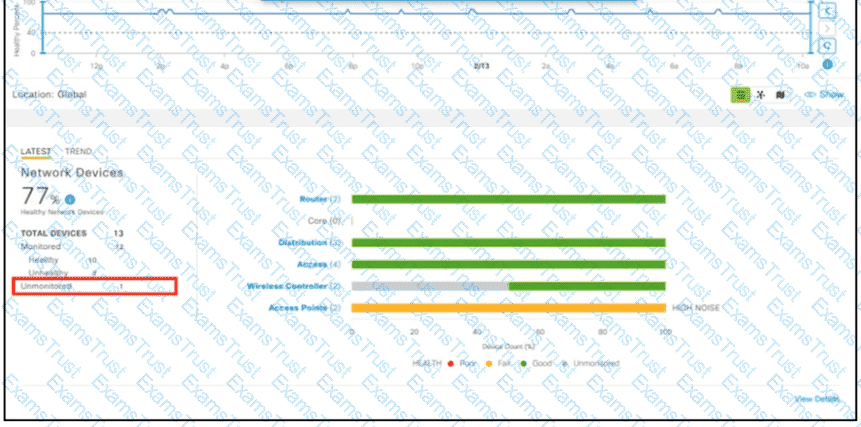
A network administrator added one router in the Cisco DNA Center and checked its discovery and health from the Network Health Dashboard. The network administrator observed that the router is still showing up as unmonitored. What must be configured on the router to mount it in the Cisco DNA Center?
Exhibit:
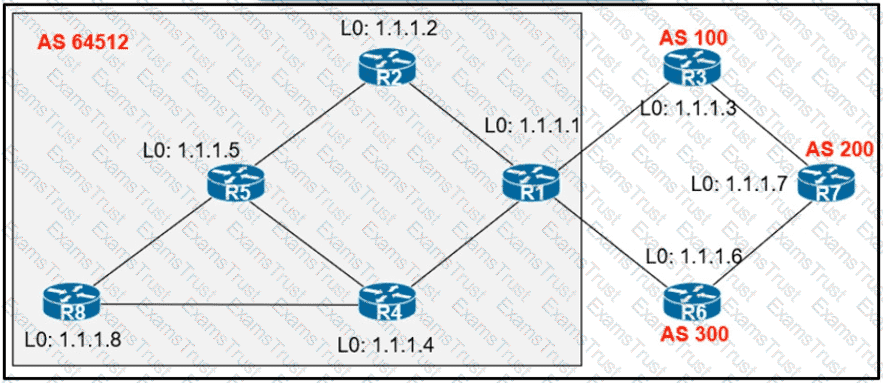
An engineer configured R2 and R5 as route reflectors and noticed that not all routes are sent to R1 to advertise to the eBGP peers. Which iBGP routers must be configured as route reflectors to advertise all routes to restore reachability across all networks?
In which two ways does the IPv6 First-Hop Security Binding Table operate? (Choose two.)
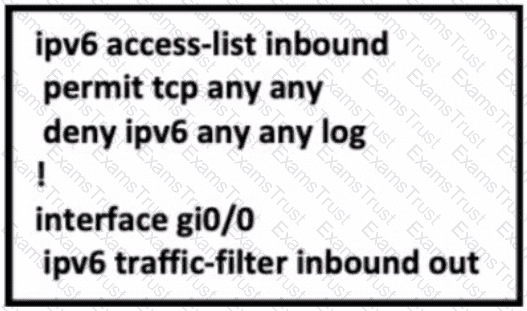
Refer to the exhibit. A network administrator configured an IPv6 access list to allow TCP return traffic only, but it is not working as expected. Which changes resolve this issue?
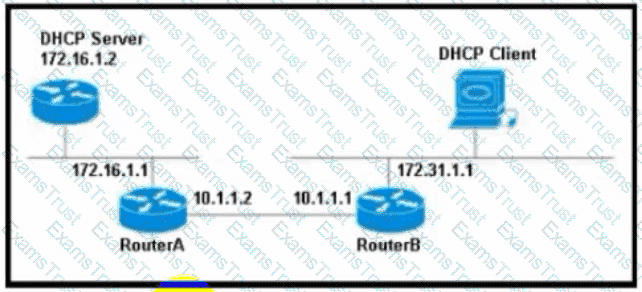
Refer to the exhibit. The DHCP client is unable to receive an IP address from the DHCP server RouterB is configured as follows:
Interface fastethernet 0/0
description Client DHCP ID 394482431
Ip address 172 31 11 255 255.255 0
!
ip route 172.16.1.0 255 255 255.0 10.1.1.2
Which command is required on the fastethernet 0/0 interface of RouterB to resolve this issue?
An engineer configured access list NON-CISCO in a policy to influence routes
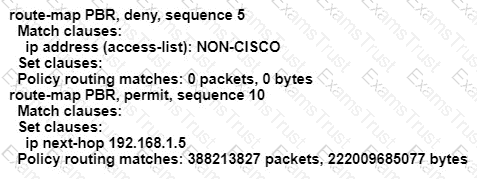
What are the two effects of this route map configuration? (Choose two.)
Refer to exhibit.
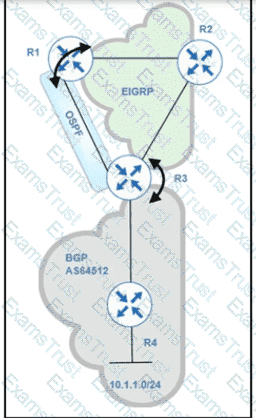
Routing protocols are mutually redistributed on R3 and R1. Users report intermittent connectivity to services hosted on the 10.1.1.0/24 prefix. Significant routing update changes are noticed on R3 when the show ip route profile
command is run. How must the services be stabilized?
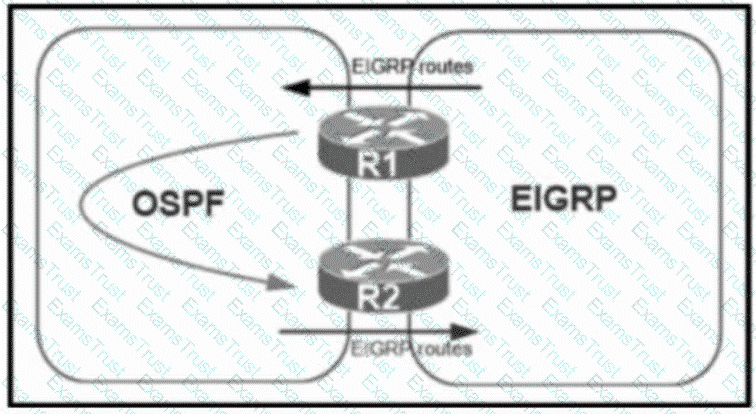
Refer to the exhibit. A network administrator configured mutual redistribution on R1 and R2 routers, which caused instability in the network. Which action resolves the issue?
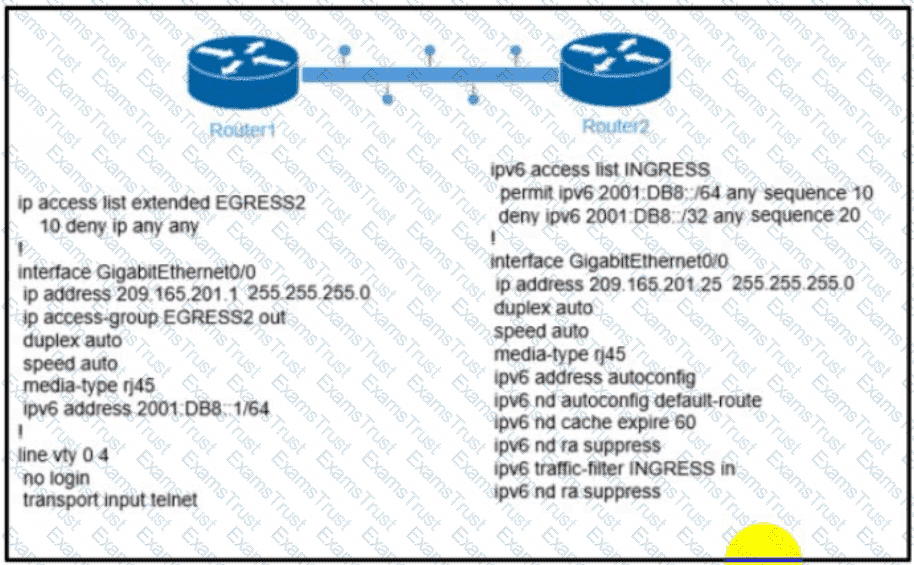
Refer to the exhibit. The engineer configured and connected Router2 to Router1. The link came up but could not establish a Telnet connection to Router1 IPv6 address of 2001:DB8::1. Which configuration allows Router2 to establish a Telnet connection to Router1?
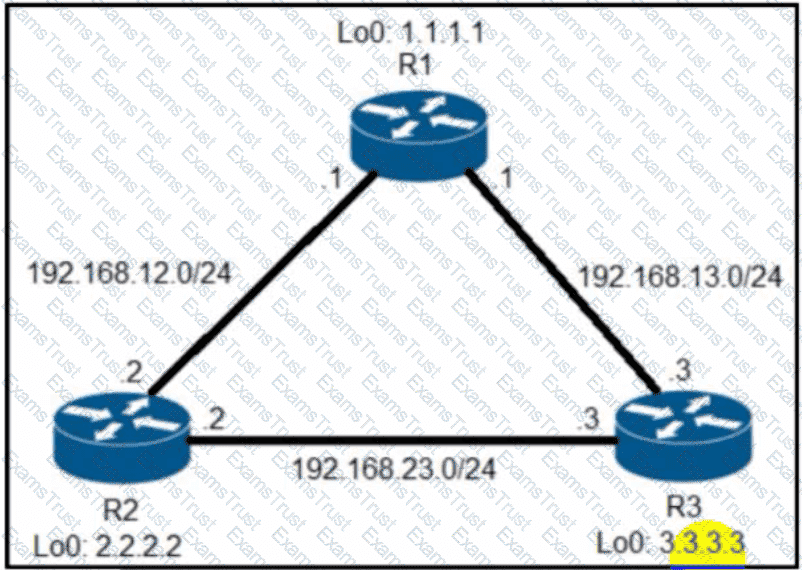
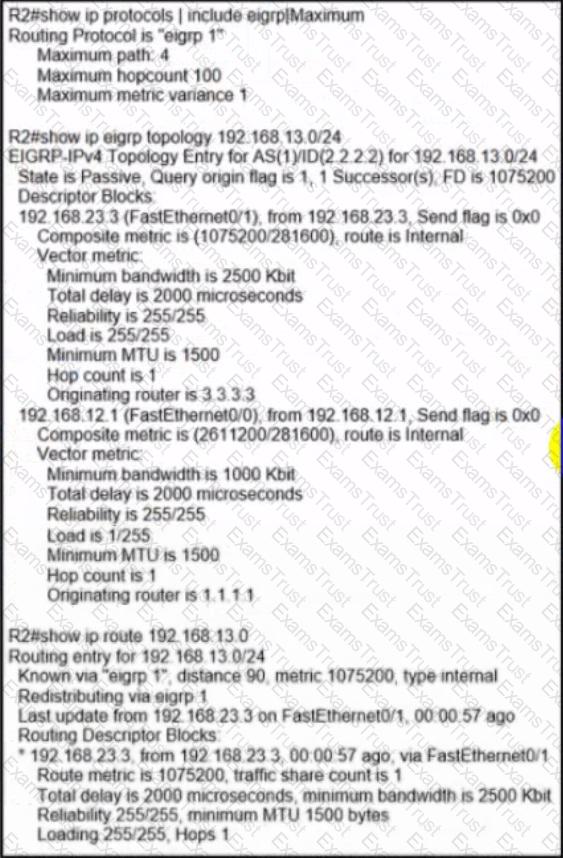
Refer to the exhibit. R2 has two paths to reach 192.168.13.0/24. but traffic is sent only through R3. Which action allows traffic to use both paths?
Refer to the exhibit.

A network administrator has developed a Python script on the local Linux machine and is trying to transfer it to the router. However, the transfer fails. Which action resolves this issue?
An engineer is troubleshooting on the console session of a router and turns on multiple debug commands. The console screen is filled with scrolling debug messages that none of the commands can be verified if entered correctly or display any output. Which action allows the engineer to see entered console commands while still continuing the analysis of the debug messages?
A network administrator is tasked to permit http and https traffic only toward the internet from the User1 laptop to adhere to company’s security policy. The administrator can still ping to Which interface should the access list 101 be applied to resolve this issue?
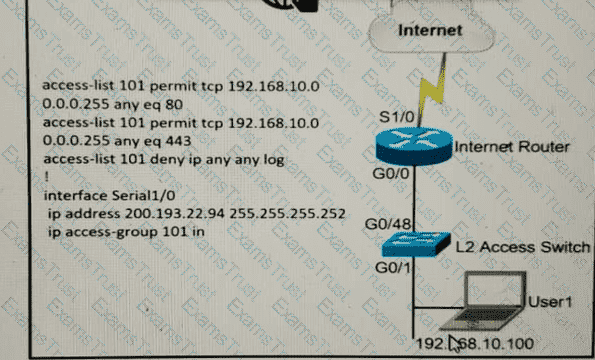
Refer to Exhibit.
A network administrator has successfully configured DMVPN topology between a hub and two spoke routers. Which two configuration commands should establish direct communications between spoke 1 and spoke 2 without going through the hub? (Choose two).
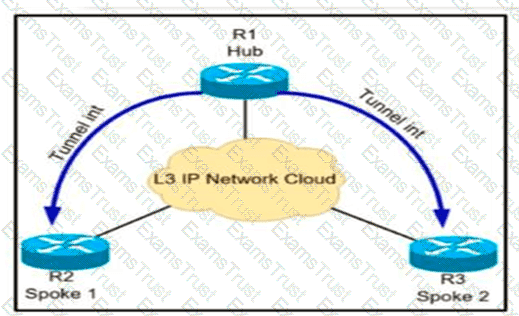
Refer to the exhibit.
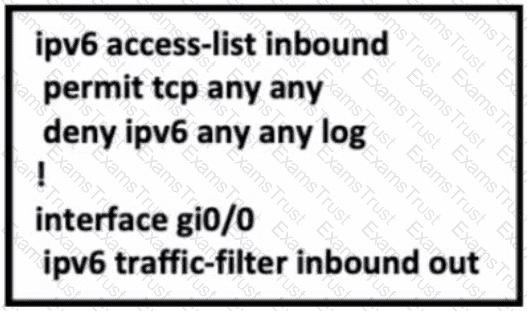
A network administrator configured an IPv6 access list to allow TCP return frame only, but it is not working as expected. Which changes resolve this issue?
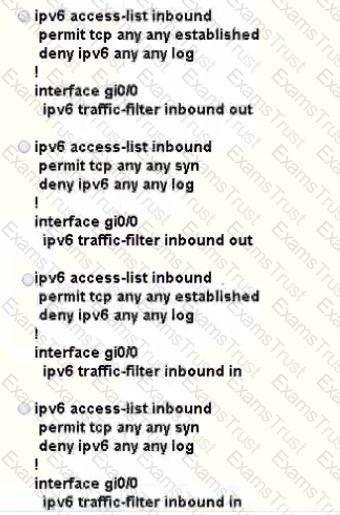
How does an MPLS Layer 3 VPN function?
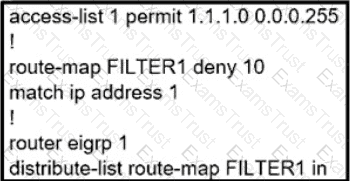
Refer to the exhibit. Which action restores the routes from neighbors while still filtering 1.1.1.0/24?
Refer to the exhibit.
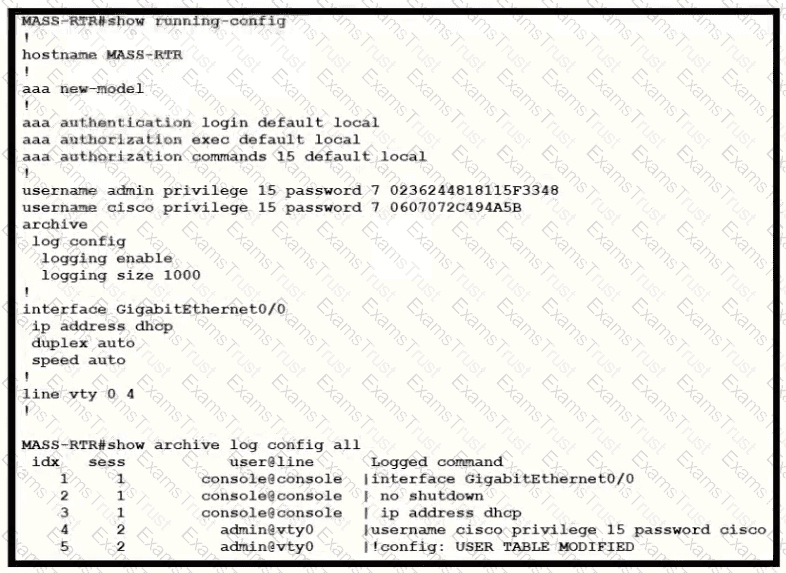
A client is concerned that passwords are visible when running this show archive log config all.
Which router configuration is needed to resolve this issue?
Refer to the exhibit.
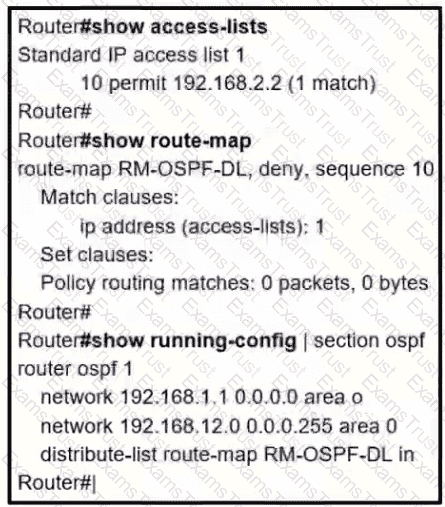
Which two actions should be taken to access the server? (Choose two.)
Drag and drop the MPLS concepts from the left onto the descriptions on the right.
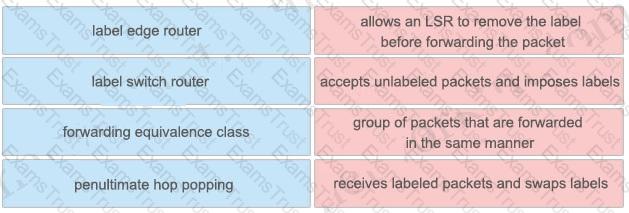
Which configuration feature should be used to block rogue router advertisements instead of using the IPv6 Router Advertisement Guard feature?
Refer to the exhibit.
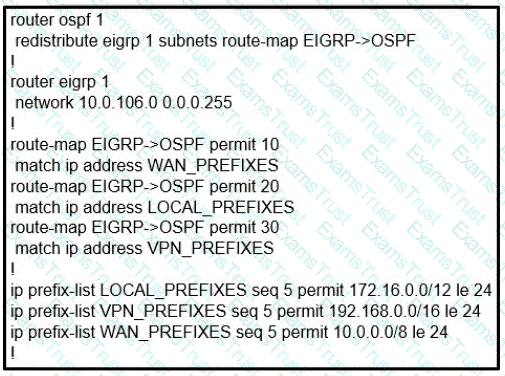
The network administrator configured redistribution on an ASBR to reach to all WAN networks but failed Which action resolves the issue?
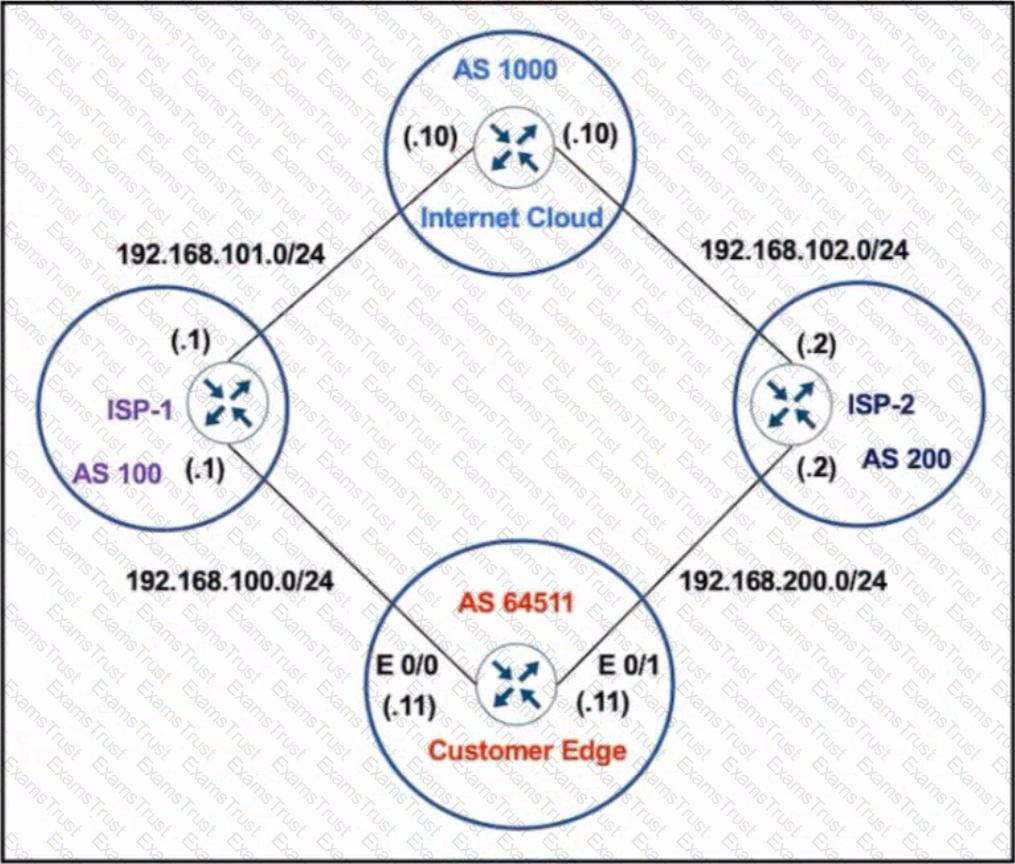
Refer to the exhibit. The network administrator has configured the Customer Edge router (AS 64511) to send only summarized routes toward ISP-1 (AS 100) and ISP-2 (AS 200).
router bgp 64511
network 172.16.20.0 mask 255.255.255.0
network 172.16.21.0 mask 255.255.255.0
network 172.16.22.0 mask 255.255.255.0
network 172.16.23.0 mask 255.255.255.0
aggregate-address 172.16.20.0 255.255.252.0
After this configuration. ISP-1 and ISP-2 continue to receive the specific routes and the summary route. Which configuration resolves the issue?
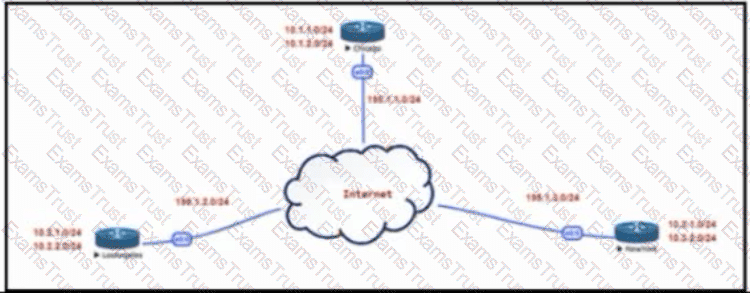
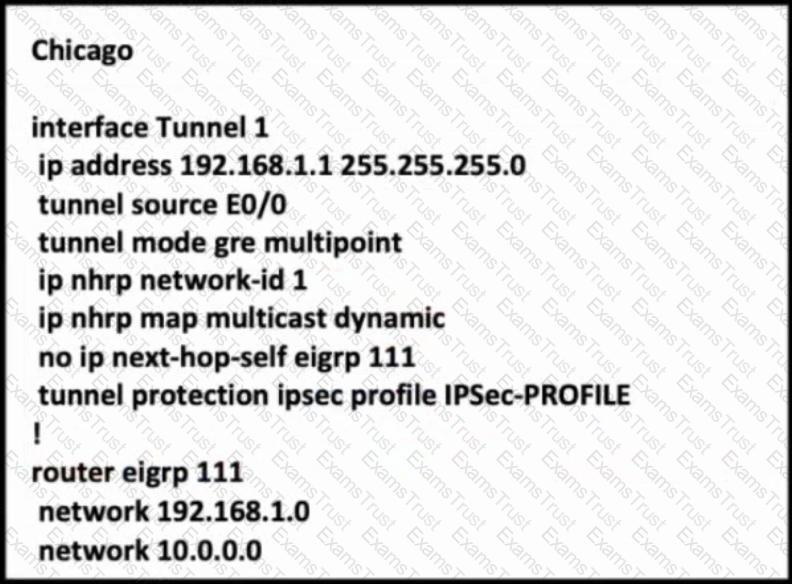
Refer to the exhibit. The Los Angeles and New York routers are receiving routes from Chicago but not from each other. Which configuration fixes the issue?
What are two MPLS label characteristics? (Choose two.)
Refer to the exhibit.
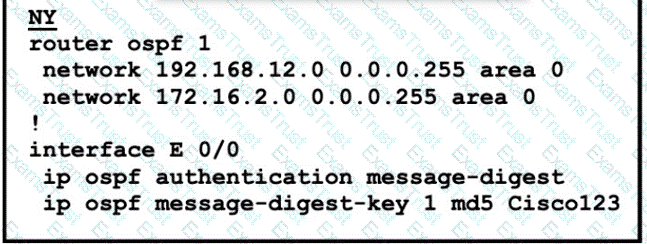
The neighbor relationship is not coming up Which two configurations bring the adjacency up? (Choose two)
Drag and drop the actions from the left into the correct order on the right to configure a policy to avoid following packet forwarding based on the normal routing path.
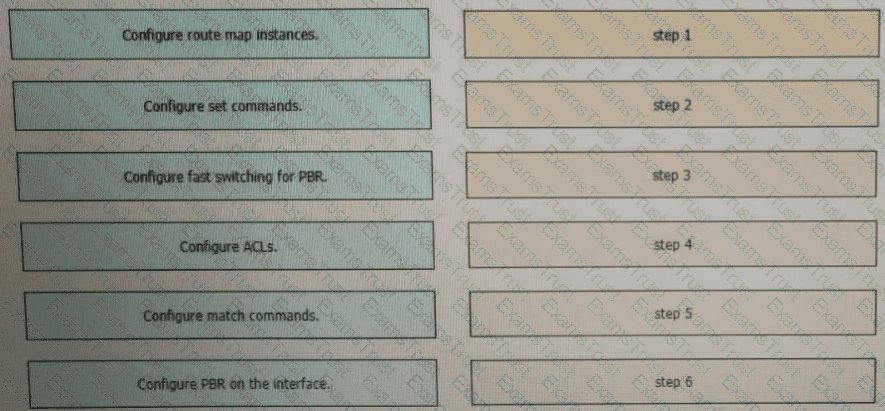
Refer to Exhibit.
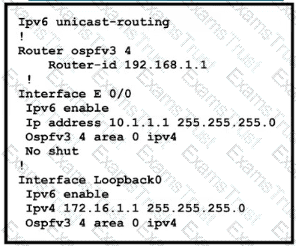
The network administrator configured the branch router for IPv6 on the E0/0 interface. The neighboring router is fully configured to meet requirements, but the neighbor relationship is not coming up. Which action fixes the problem on the branch router to bring the IPv6 neighbors up?
Which two protocols work in the control plane of P routers across the MPLS cloud? (choose two)
Refer to the exhibit.
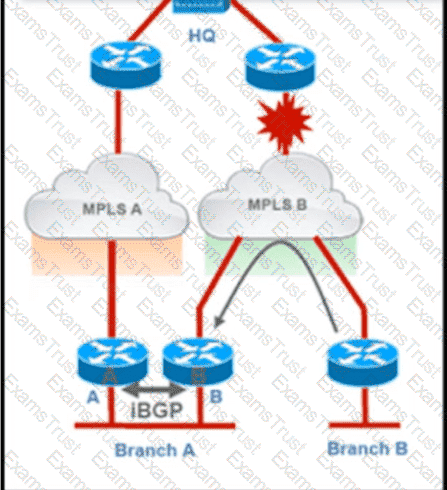
Troubleshoot and ensure that branch B only ever uses the MPLS B network to reach HQ. Which action achieves this requirement?
An engineer needs dynamic routing between two routers and is unable to establish OSPF adjacency. The output of the show ip ospf neighbor command shows that the neighbor state is EXSTART/EXCHANGE. Which action should be taken to resolve this issue?
Exhibit:
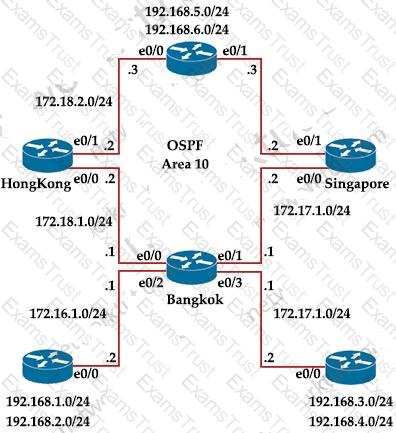
Bangkok is using ECMP to reach to the 192.168.5.0/24 network. The administrator must configure Bangkok in such a way that Telnet traffic from 192.168.3.0/24 and192.168.4.0/24 networks uses the HongKong router as the preferred router. Which set of configurations accomplishes this task?
Drag and drop the LDP features from the left onto the descriptions on the right

Refer to Exhibit.

A network administrator enables DHCP snooping on the Cisco Catalyst 3750-X switch and configures the uplink port (Port-channel2) as a trusted port. Clients are not receiving an IP address, but when DHCP snooping is disabled, clients start receiving IP addresses. Which global command resolves the issue?
Refer to the exhibit.
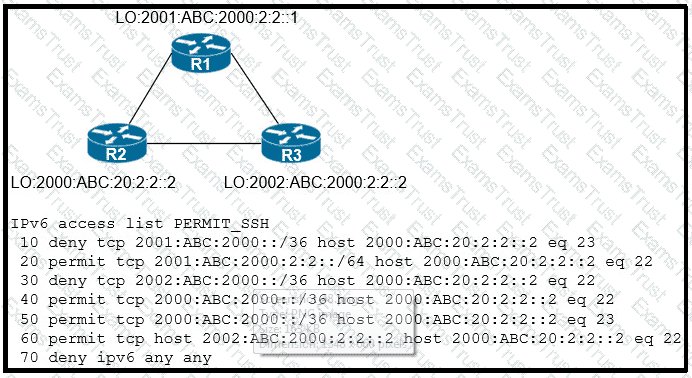
An IPv6 network was newly deployed in the environment and the help desk reports that R3 cannot SSH to the R2s Loopback interface. Which action resolves the issue?
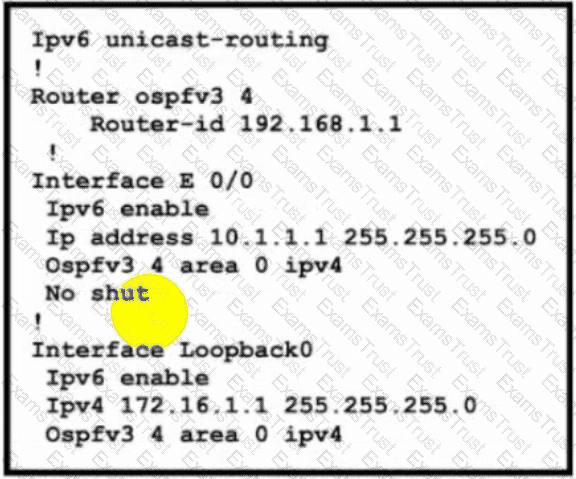
Refer to the exhibit. The network administrator configured the branch router for IPv6 on the E 0/0 interface The neighboring router is fully configured to meet requirements, but the neighbor relationship is not coming up. Which action fixes the problem on the branch router to bring the IPv6 neighbors up?
Refer to the exhibit.
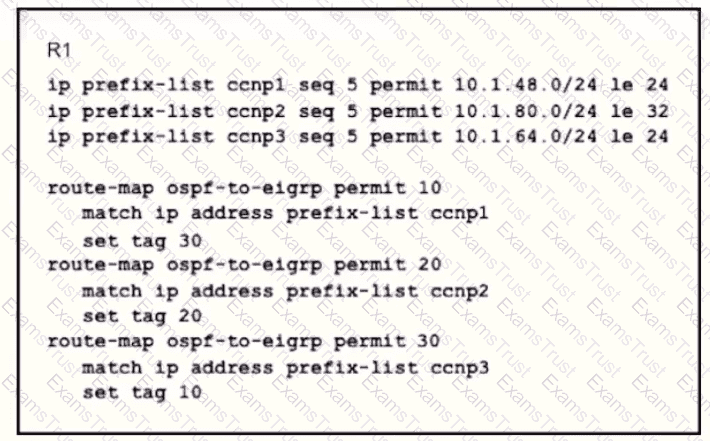
An engineer wanted to set a tag of 30 to route 10 1.80.65/32 but it failed How is the issue fixed?
Drag and drop the MPLS VPN device types from the left onto the definitions on the right.

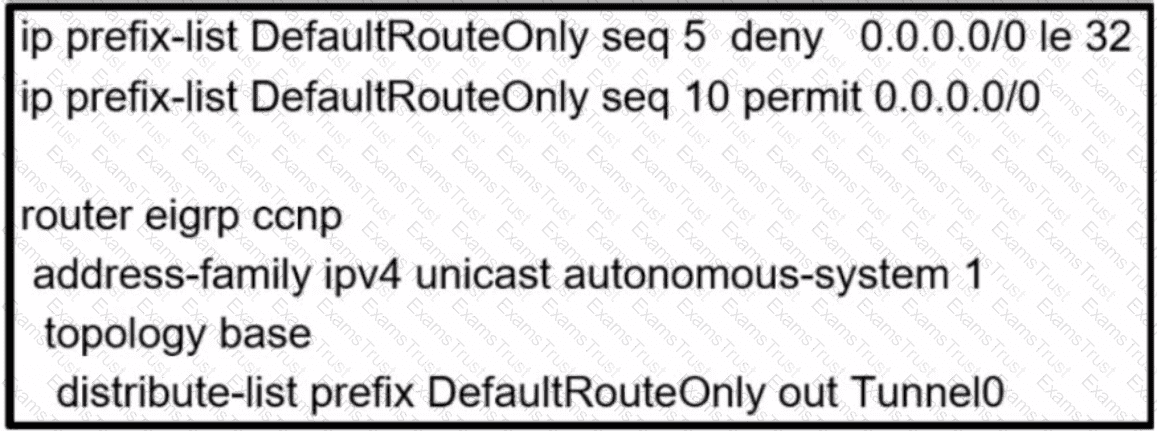
Refer to the exhibit. The administrator configured route advertisement to a remote low resources router to use only the default route to reach any network but failed. Which action resolves this issue?
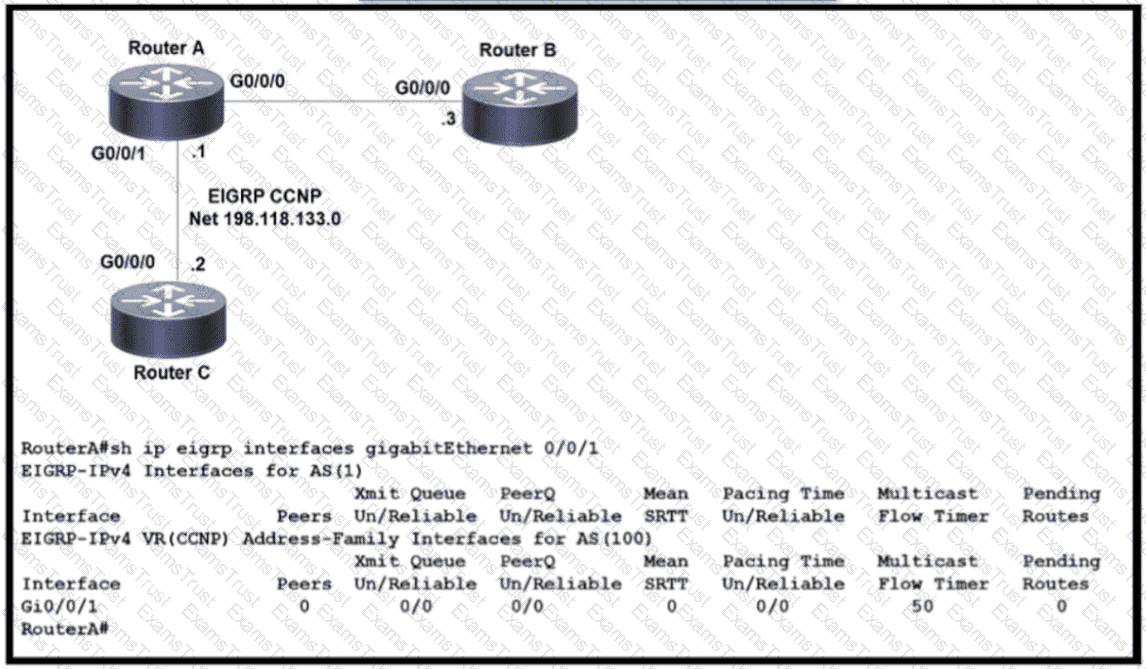
Refer to the exhibit EIGRP adjacency between router A and router C is not working as expected Which two configurations resolve the issue? (Choose two )
A)
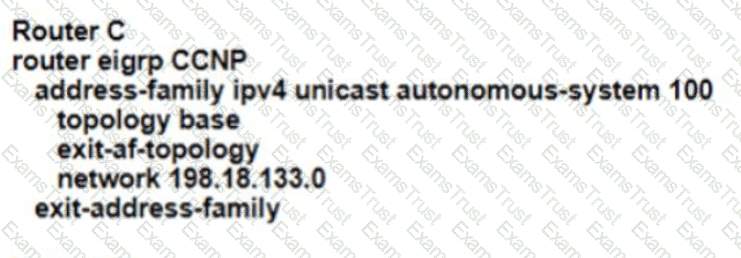
B)
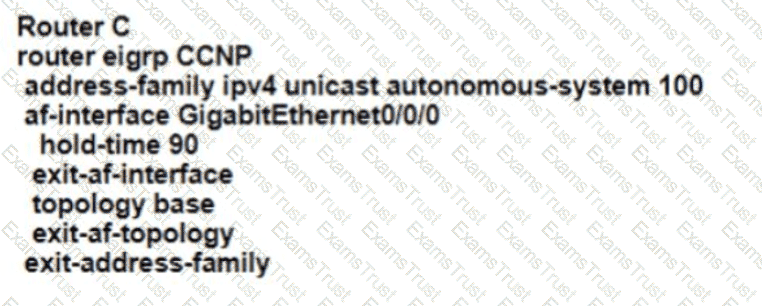
C)
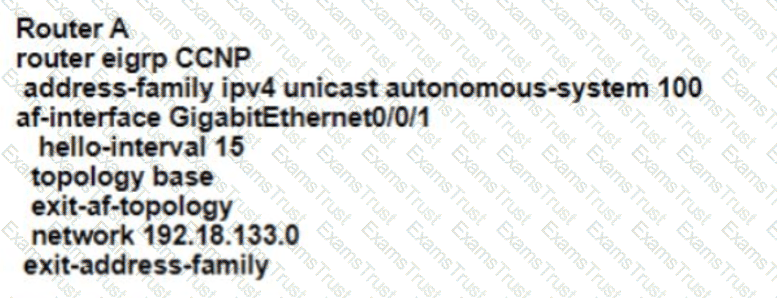
D)

E)
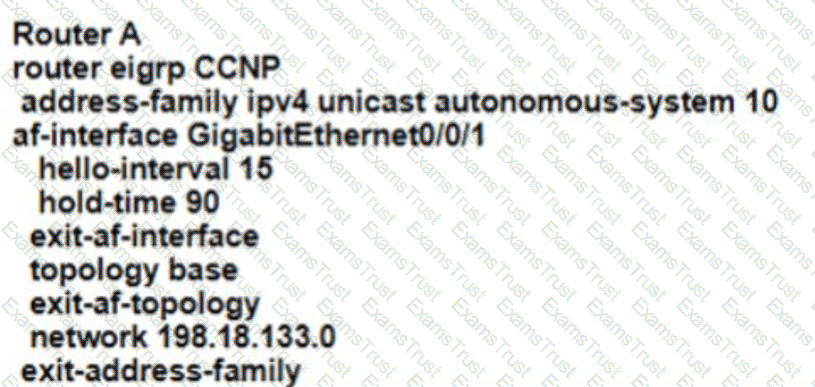
Exhibits:
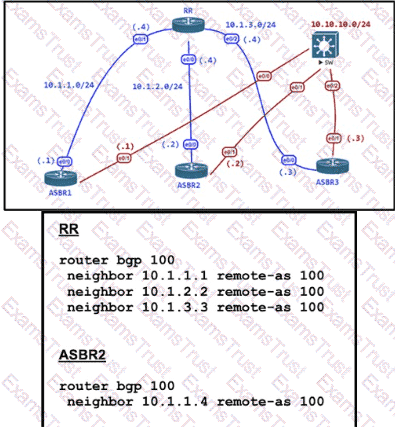
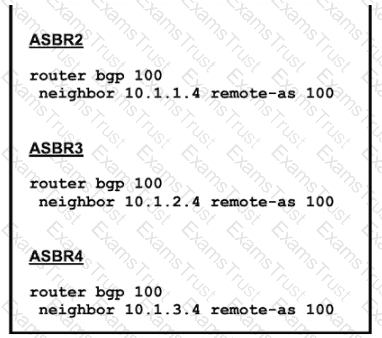
Refer to the exhibit The administrator configured the network devices for end-to-end reachability, but the ASBRs are not propagating routes to each other Which set of configurations resolves this issue?
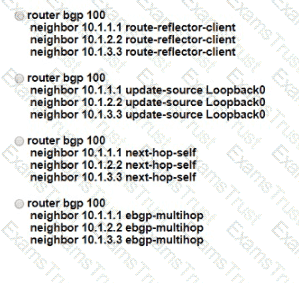
Which Layer 3 VPN attribute allows different customers to connect to the same MPLS network wrth overlapping IP ranges?
Refer to the exhibit.
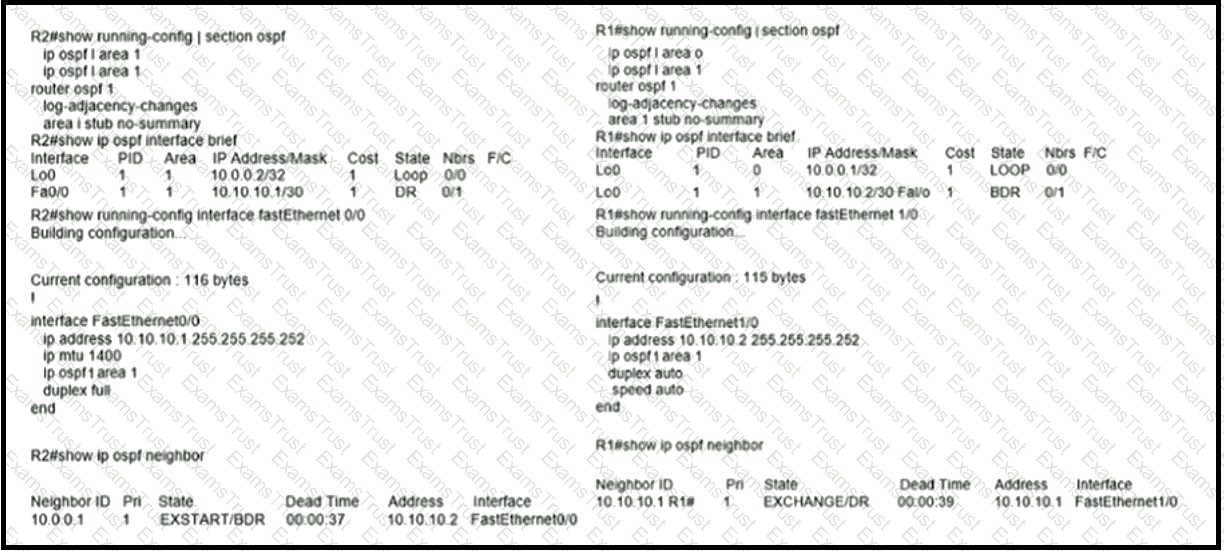
Which action restores OSPF adjacency between R1 and R2?
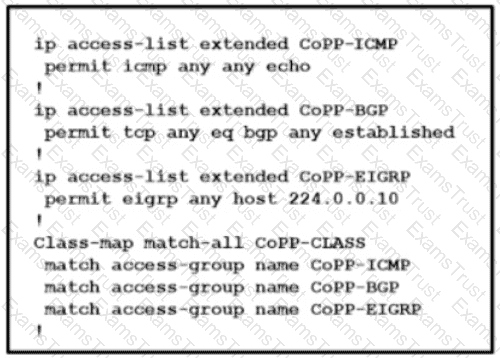
Refer to the exhibit A CoPP policy is implemented to allow specific control traffic, but the traffic is not matching as expected and is getting unexpected behavior of control traffic. Which action resolves the issue?
Refer to the exhibit.

During ISP router maintenance, the network produced many alerts because of the flapping interface. Which configuration on R1 resolves the issue?
What is a function of the IPv6 DHCP Guard feature for DHCP messages?
:583
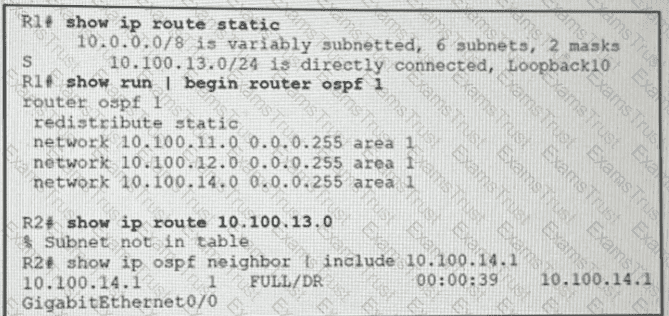
Refer to the exhibit. R1 is directly connected to R2 over network 10.100.14.0/24. An engineer configures R1 to advertise a static route that is connected to a local loopback for network 10.100.13.0/24. The network is not in the routing table of R2. Which action resolves the issue?
Refer to the exhibit.
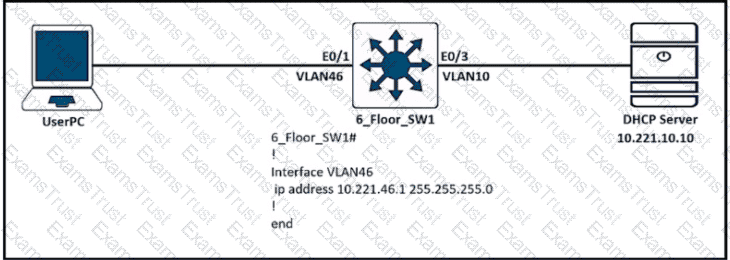
Users in VLAN46 cannot get the IP from the DHCP server. Assume that all the parameters are configured properly in VLAN 10 and on the DHCP server Which command on interlace VLAN46 allows users to receive IP from the DHCP server?
:588
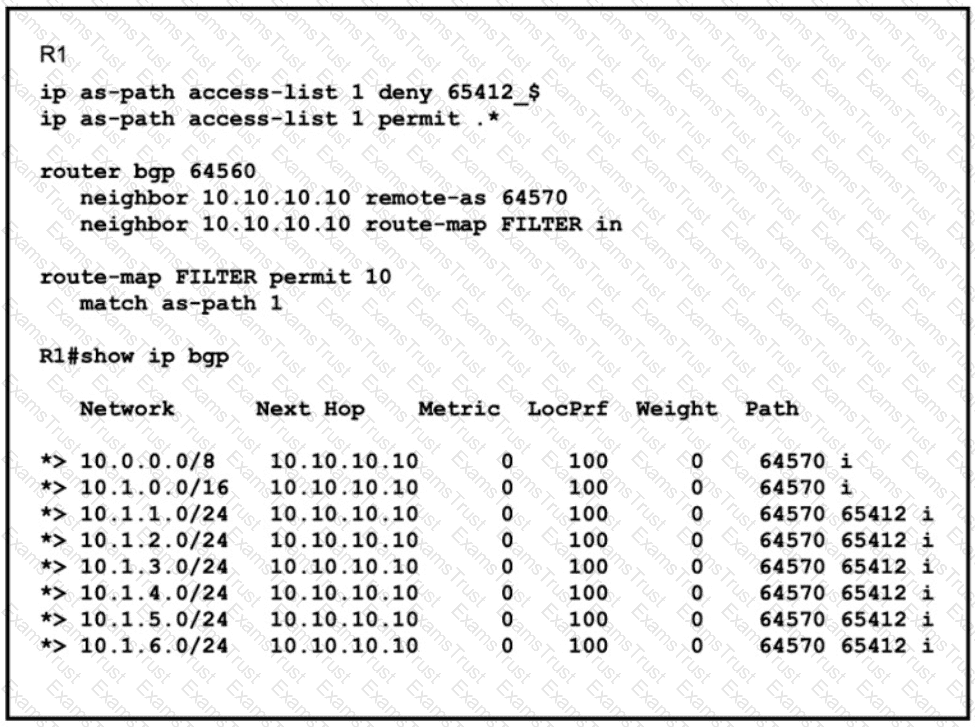
Refer to the exhibit. An engineer must filter prefixes that originate from AS65412. but it is not working correctty. Which configuration must the engineer apply to R1 to resolve the issue?
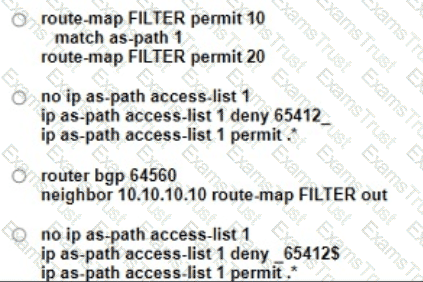
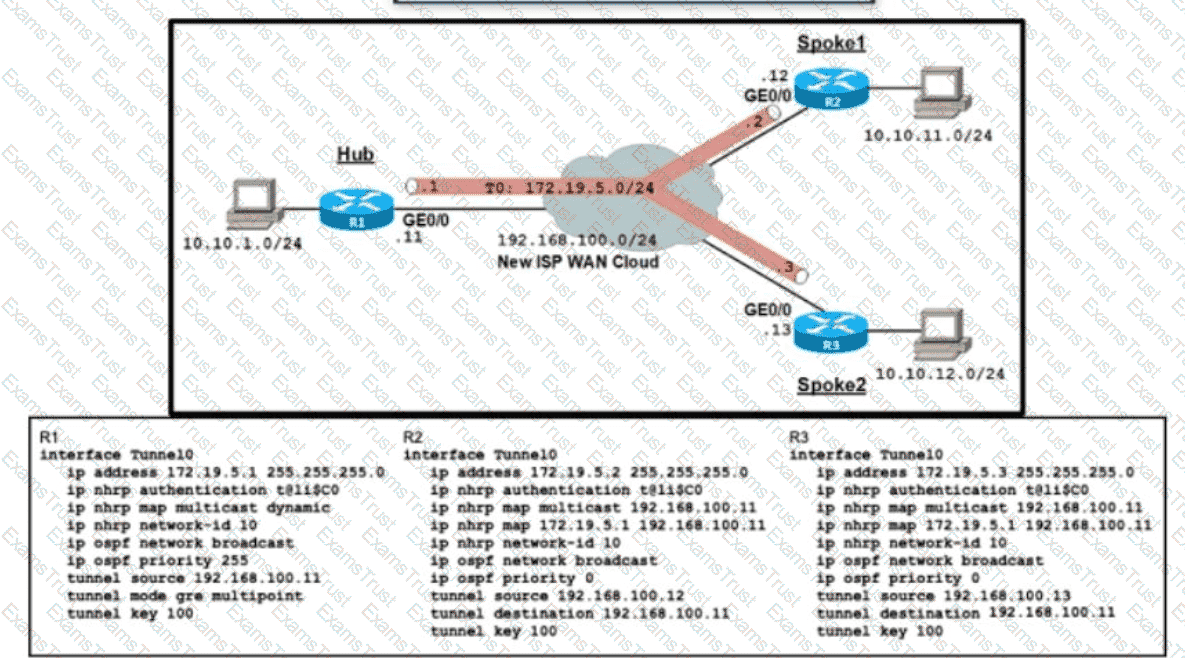
Refer to the exhibit. An organization is installing a new L3 MPLS link to establish DM VPN Phase 2 tunnels between the hub and two spoke routers Which additional configuration should the engineer implement on each device to achieve optimal routing between the spokes?
A)

B)

C)

D)

:587
Which IP precedence value does BFD use to prioritize traffic within an infrastructure device?
Refer to the exhibit.
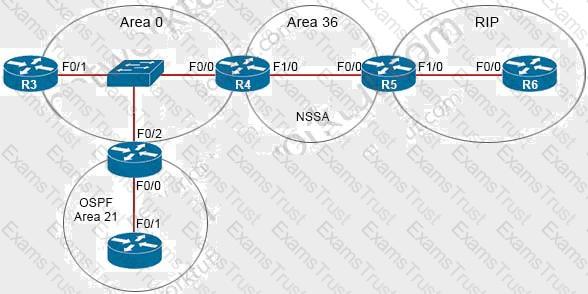
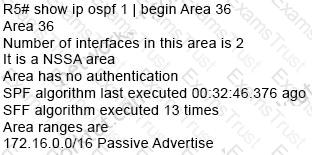
The network engineer configured the summarization of the RIP routes into the OSPF domain on R5 but
still sees four different 172.16.0.0/24 networks on R4. Which action resolves the issue?
Refer to the exhibit.
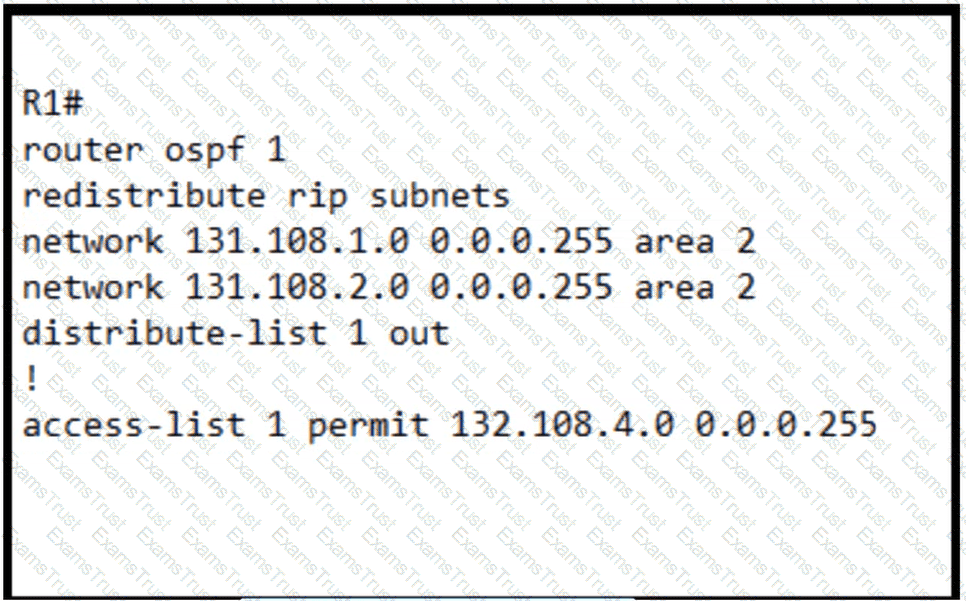
The R1 OSPF neighbor is not receiving type 5 external LSAs for 132.108.2.0/24 and 132.108.3.0/24 networks. Which configuration command resolves the issue?
Which technique removes the outermost label of an MPLS-tagged packet before the packet is forwarded to an adjacent LER?
Refer to the exhibit.
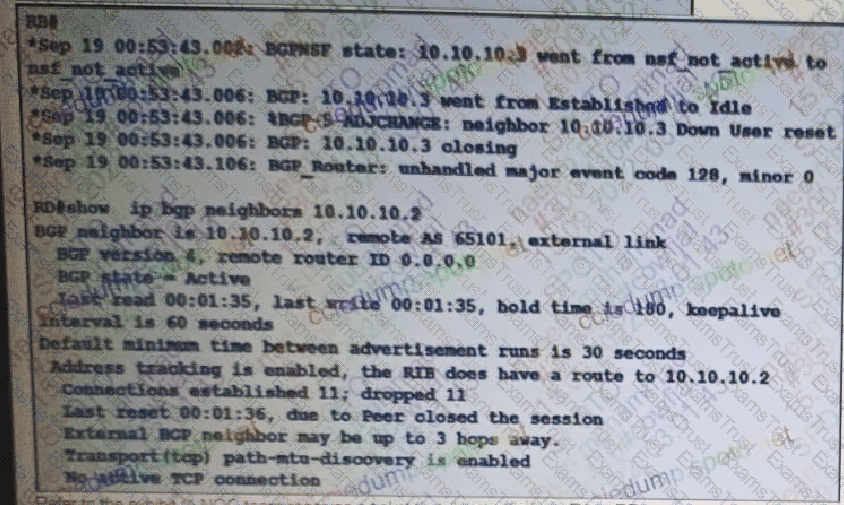
A NOC team receives a ticket that data traffic from RA to RF is not forwarded when the link between the RC-RE path goes down. All routers learn loopback IP through the IGP protocol. Which configuration resolves?
Refer to the exhibit.
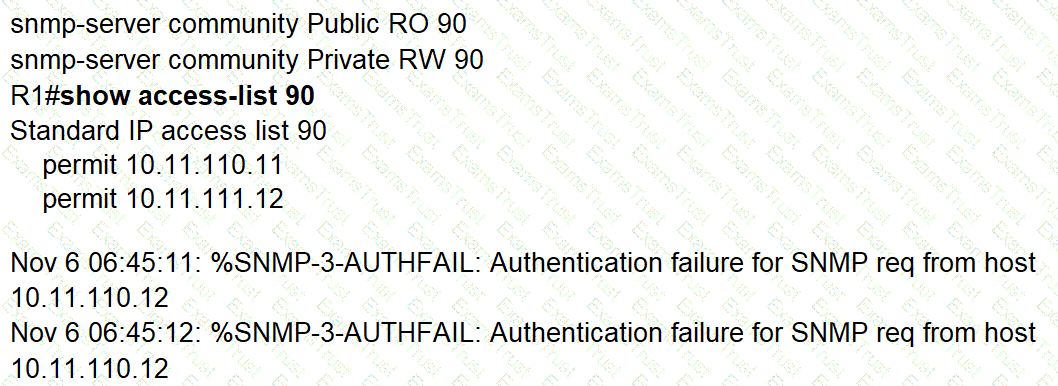
A network administrator notices these console messages from host 10.11.110.12 originating from interface E1/0. The administrator considers this an unauthorized attempt to access SNMP on R1. Which action prevents the attempts to reach R1 E1/0?
:592
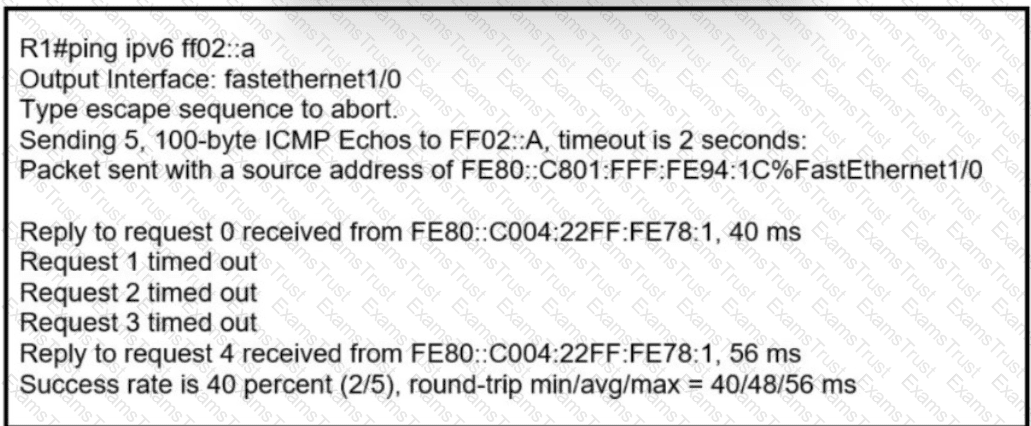
Refer to the exhibit An engineer investigates an IPv6 EIGRP neighbor adjacency issue that sees the neighbors flapping and issued a ping from R1 to its directly connected neighbor. The link between the switches is stable at Layer 2. and other connected devices are also functioning. Which action resolves the issue?
What must a network architect consider for RTs when planning for a single customer full-mesh VPN m an MPLS Layer 3 network?
What is a function of BFD?
Refer to the exhibit.
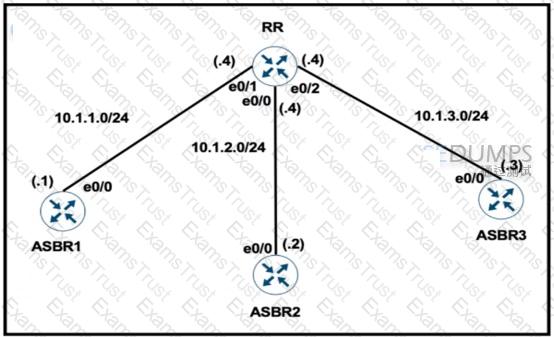
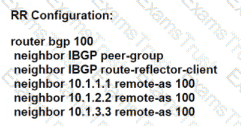
The network administrator configured the network to establish connectivity between all devices and notices that the ASBRs do not have routes for each other. Which set of configurations resolves this issue?
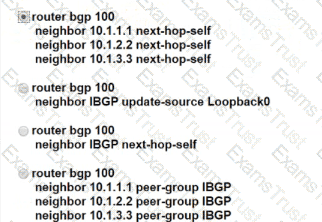
What are the two goals of micro BFD sessions? (Choose two.)
Refer to the exhibit.
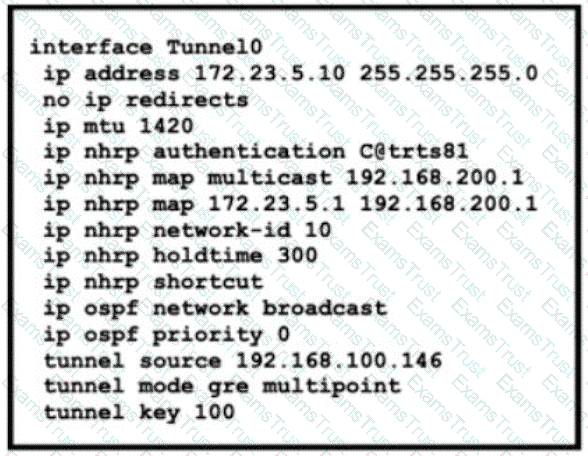
A network engineer is adding a new spoke router into an existing DMVPN Phase 3 tunnel with a hub router to provide secure communication between sites Which additional configuration must the engineer apply to enable the tunnel to come up?
Refer to the exhibit.
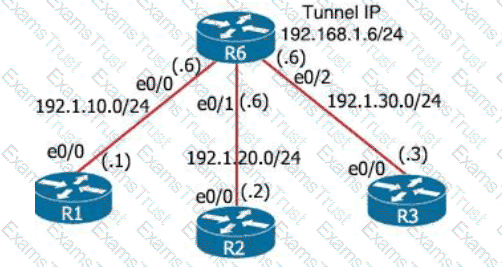
An engineer must establish multipoint GRE tunnels between hub router R6 and branch routers R1, R2, and R3. Which configuration accomplishes this task on R1?
A)
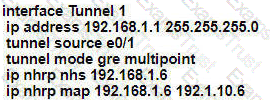
B)
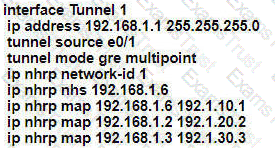
C)
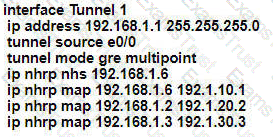
D)
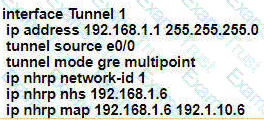
An engineer must override the normal routing behavior of a router for Telnet traffic that is destined to 10.10.10.10 from 10.10.1.0/24 via a next hop of 10.4.4.4. which is directly connected to the router that is connected to the 10.1.1.0/24 subnet Which configuration reroutes traffic according to this requirement?
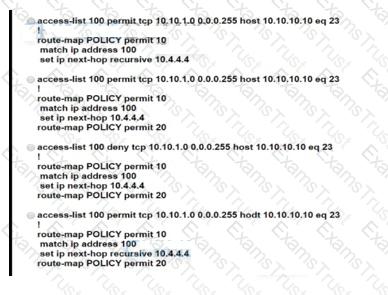
Refer to the exhibit.
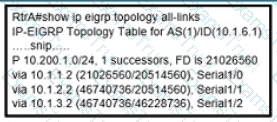
Which action makes 10.1.3.2 the feasible successor to reach 10. 200. 1 0/24 for location S42T447E33F95?
Refer to the exhibit.
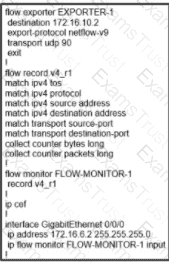
An engineer configured NetFlow to capture traffic information through the router, but it iOS not working as expected. Which action captures the flow information from this router to the collector?
Refer to the exhibit.

An engineer must advertise routes into IPv6 MP-BGP and failed. Which configuration resolves the issue on R1?
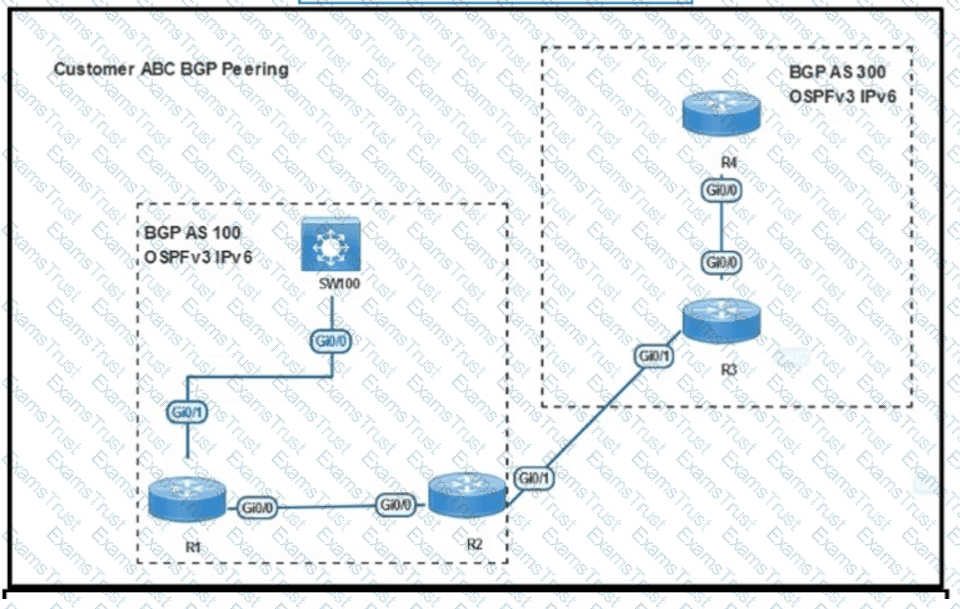
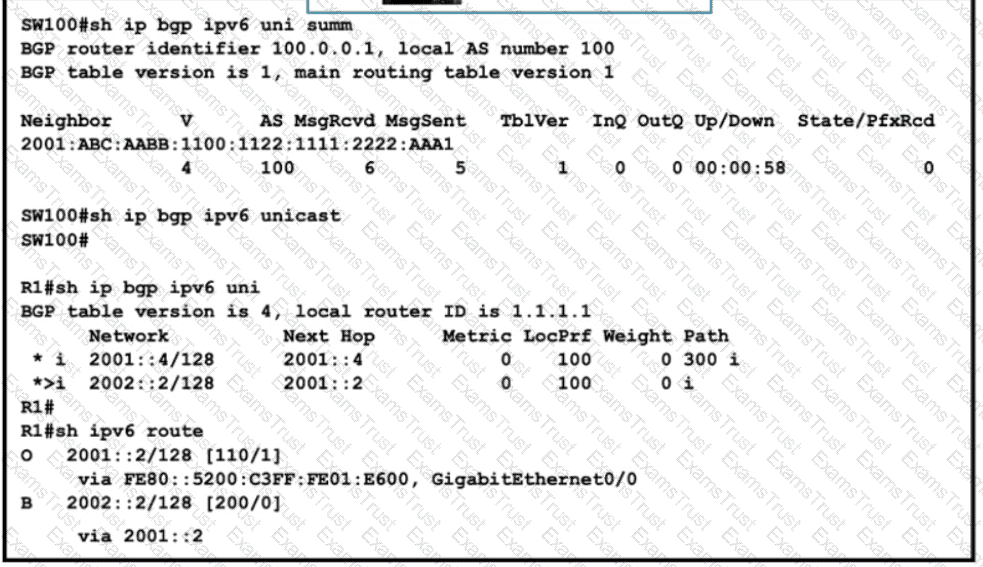
Refer to the exhibit SW100 cannot receive routes from R1 Which configuration resolves the issue?
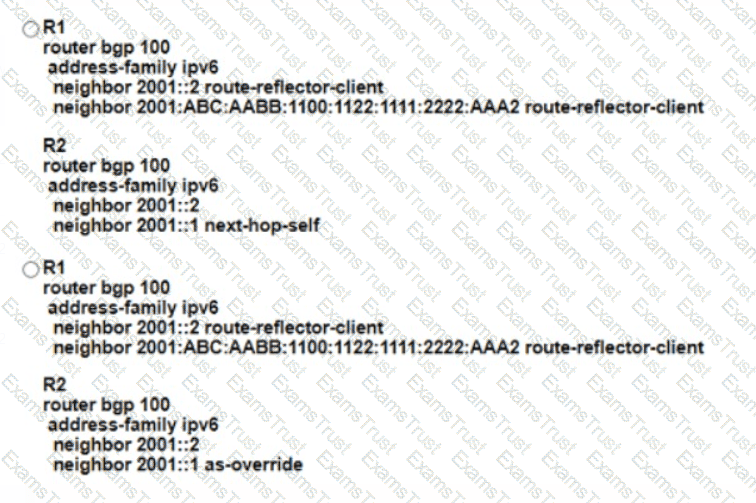
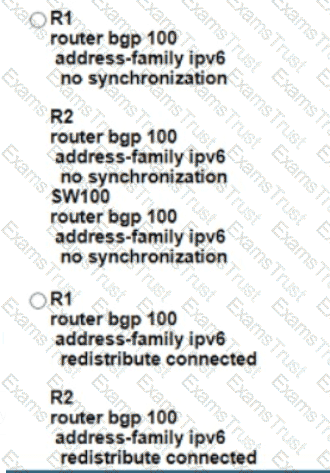
Refer to the exhibit.
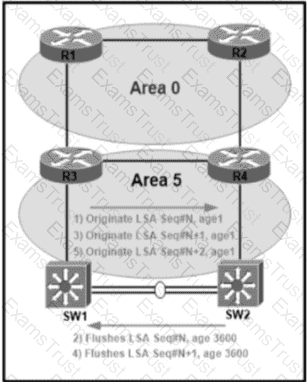
An error message "an OSPF-4-FLOOD_WAR” is received on SW2 from SW1. SW2 is repeatedly receiving its own link-state advertisement and flushes it from the network. Which action resolves the issue?
A customer reports that traffic is not passing on an EIGRP enabled multipoint interface on a router configured as below:
interface Serial0/0
no ip address
interface Server0/0/0.9 multipoint
ip address 10.1.1.1 255.255.255.248
ip split-horizon eigrp 1
Which action resolves the issue?
Refer to the exhibit.
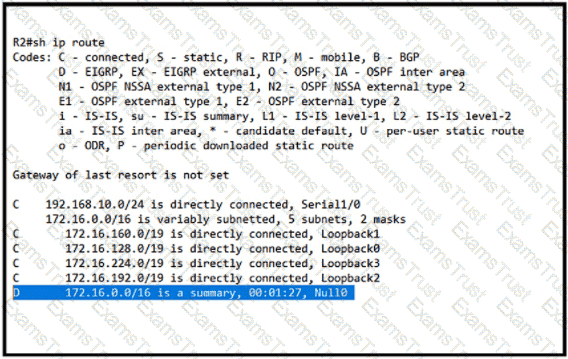
An engineer must configure EIGRP between R1 and R2 with no summary route. Which configuration resolves the issue?
A)

B)

C)

D)

:578
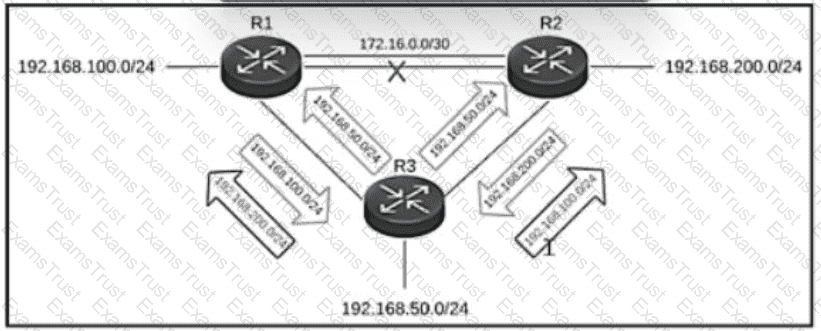
Refer to the exhibit. The primary link between R1 and R2wentdownbutR3isstill advertising the 192.166.200.0/24 networktoR1 and the 192.166.100.0/24 networktoR2, which createsaloop. Which action resolves the issue?
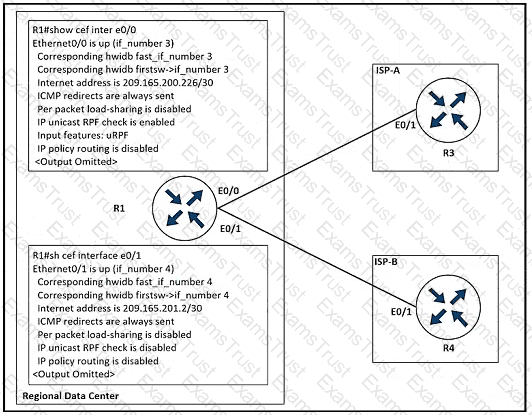
Refer to the exhibit. The company implemented uRPF to address an antispoofing attack. A network engineer received a call from the IT security department that the regional data center is under an IP attack Which configuration must be implemented on R1 to resolve this issue?
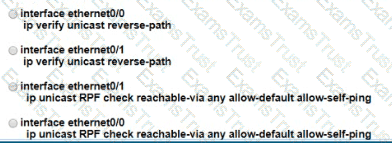
The network administrator configured CoPP so that all HTTP and HTTPS traffic from the administrator device located at 172.16 1.99 toward the router CPU is limited to 500 kbps. Any traffic that exceeds this limit must be dropped.
access-list 100 permit ip host 172.16.1.99 any
!
class-map CM-ADMIN
match access-group 100
!
policy-map PM-COPP
class CM-ADMIN
police 500000 conform-action transmit
!
interface E0/0
service-policy input PM-COPP
CoPP failed to capture the desired traffic and the CPU load is getting higher.
Which two configurations resolve the issue? (Choose two.)
Refer to the exhibit.
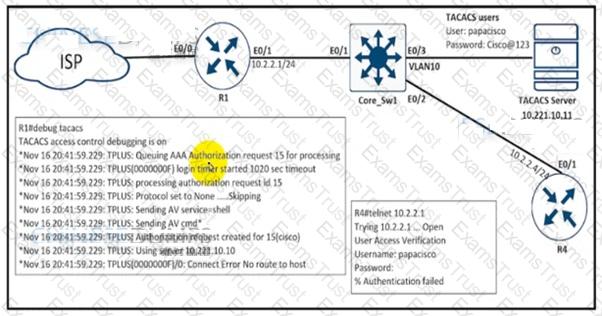
An engineer is trying to connect to R1 via Telnet with no success. Which configuration resolves the issue?
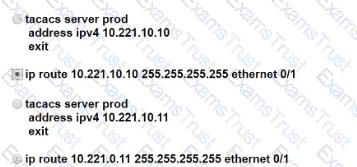
Refer to the exhibit.
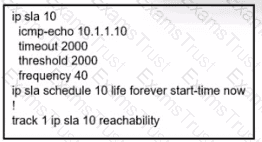
An engineer configured IP SLA to monitor a next hop on a router for reachability When the next hop is unreachable, the router is executing tracking and failing over another route, but packet loss is experienced because the reachability is flapping. Which action resolves the issue?
:586
While BGP internet routes are redistributed to a lower class of router via RIP. packets are being dropped and routes are failing to be distributed in RIP. Which action resolves the issue?
Drag and drop the descriptions from the left onto the IPv6 first hop security features on the right. Not all options are used.
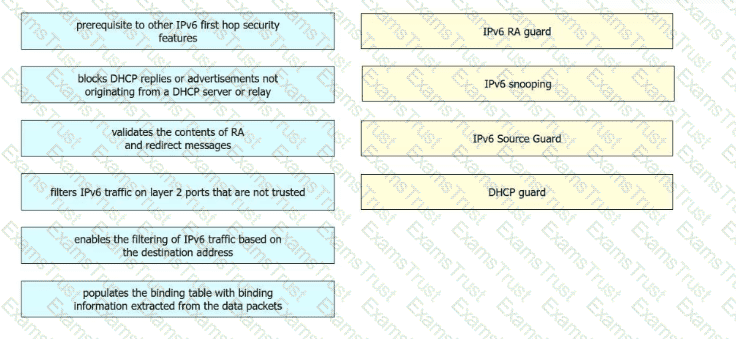
The network administrator configured CoPP so that all SNMP traffic from Cisco Prime located at 192.168.1.11 toward the router CPU is limited to 1000 kbps. Any traffic that exceeds this limit must be dropped.
access-list 100 permit udp any any eq 161
!
class-map CM-SNMP
match access-group 100
!
policy-map PM-COPP
class CM-SNMP
police 1000 conform-action transmit
!
control-plane
service-policy input PM-COPP
The network administrator is not getting the desired result for the SNMP traffic and SNMP traffic is getting dropped frequently. Which set of configurations resolves the issue?
Drag and drop the descriptions from the left onto the corresponding MPLS components on the right.
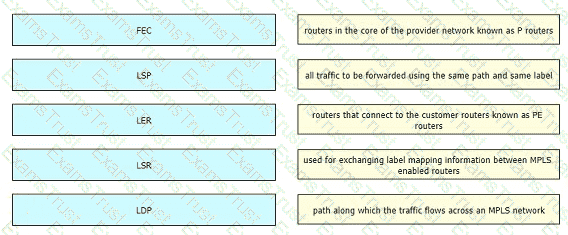
Refer to the exhibit.
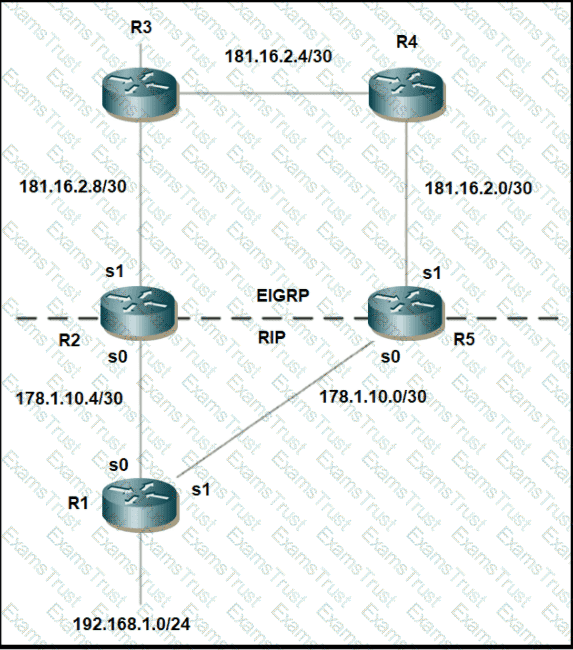
Mutual redistribution is enabled between RIP and EIGRP on R2 and R5. Which configuration resolves the routing loop for the 192.168.1.0/24 network?
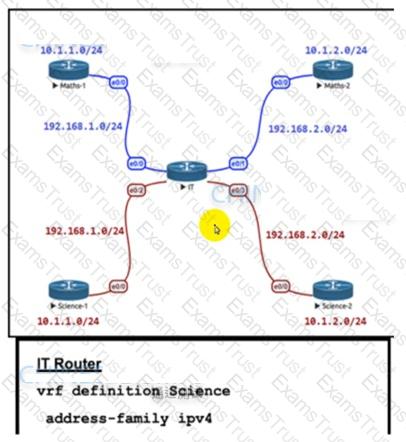
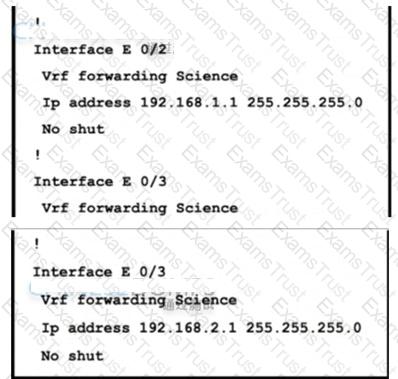
Refer to the exhibit. The IT router has been configured with the Science VRF and the interfaces have been assigned to the VRF. Which set of configurations advertises Science-1 and Science-2 routes using EIGRPAS 111?
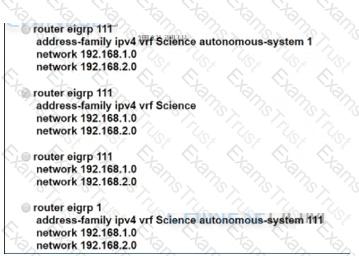
Refer to the exhibit. An engineer is trying to log in to R1 via R3 loopback address. Which action resolves the issue?
Refer to the exhibit.
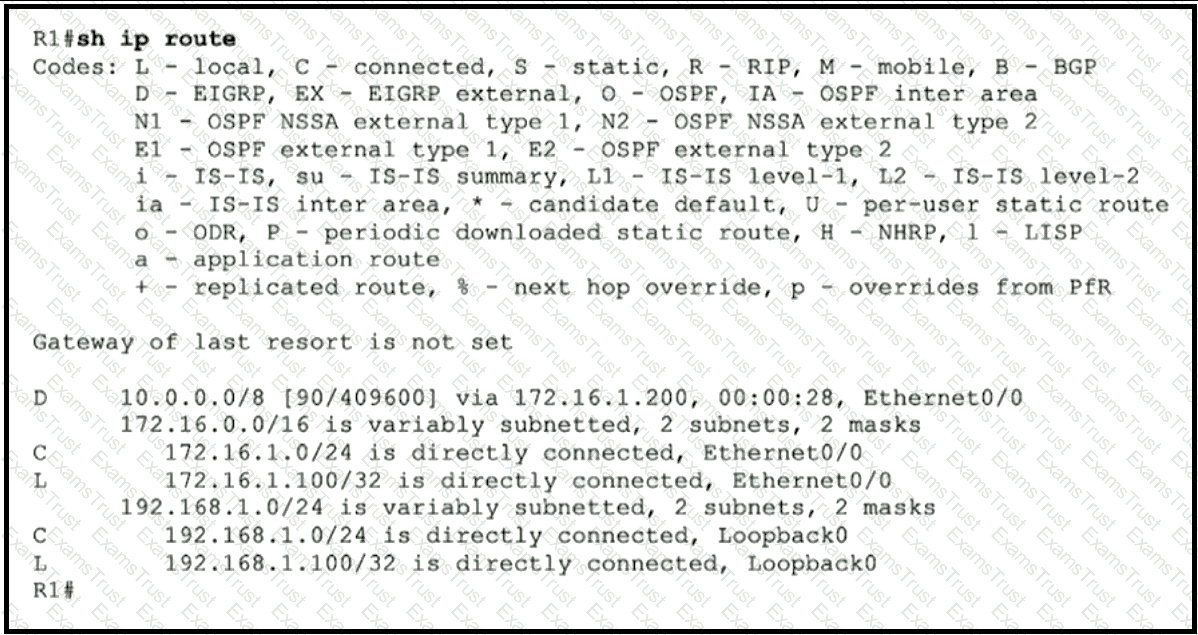
The R2 loopback interface is advertised with RIP and EIGRP using default values. Which configuration changes make R1 reach the R2 loopback using RIP?
What is an MPLS LDP targeted session?
A network administrator performed a Compact Flash Memory upgrade on a Cisco Catalyst 6509 Switch. Everything is functioning normally except SNMP, which was configured to monitor the bandwidth of key interfaces but the interface indexes are changed. Which global configuration resolves the issue?
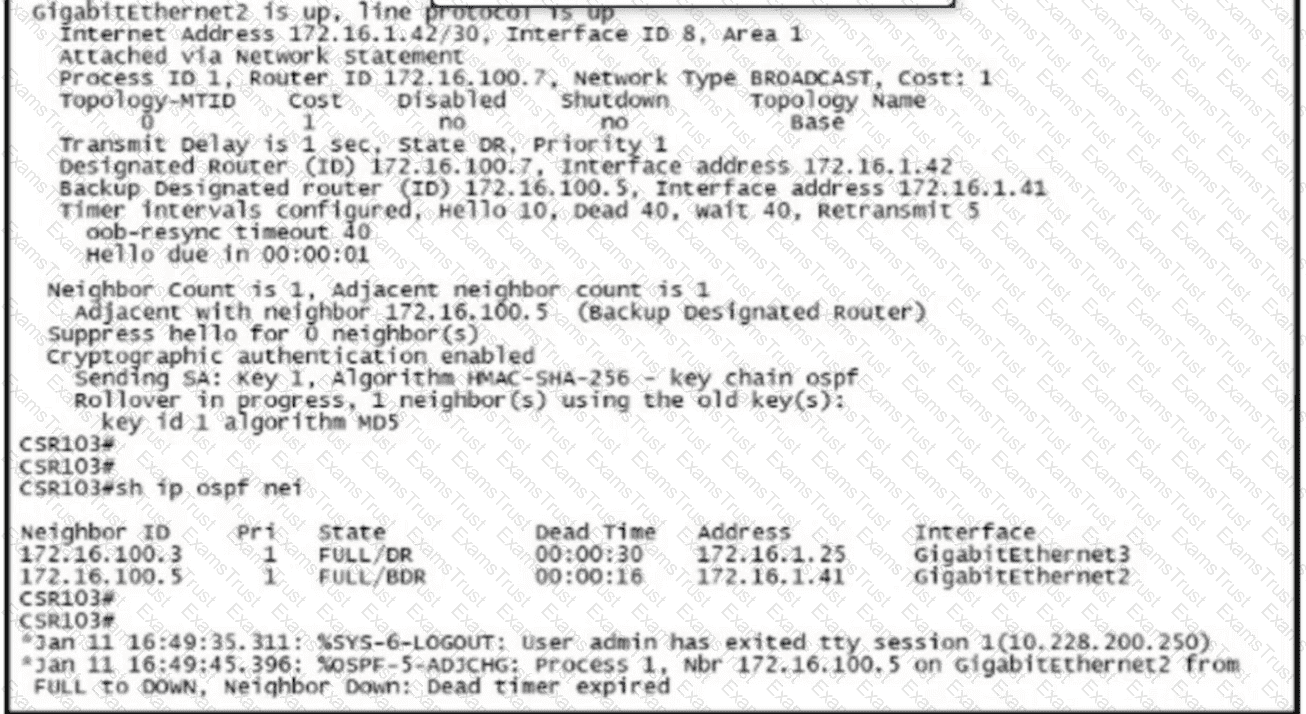
Refer to the exhibit. Which configuration resolves the issue?
A)

B)

C)
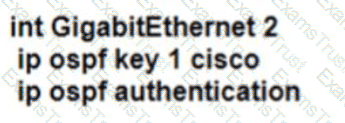
D)
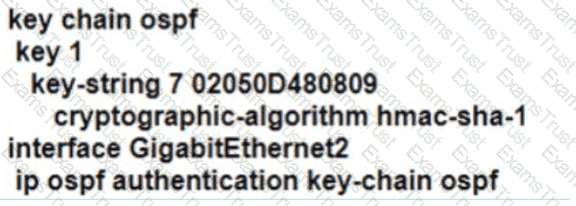
Which table is used to map the packets in an MPLS LSP that exit from the same interface, via the same next hop, and have the same queuing policies?
Refer to the exhibit.
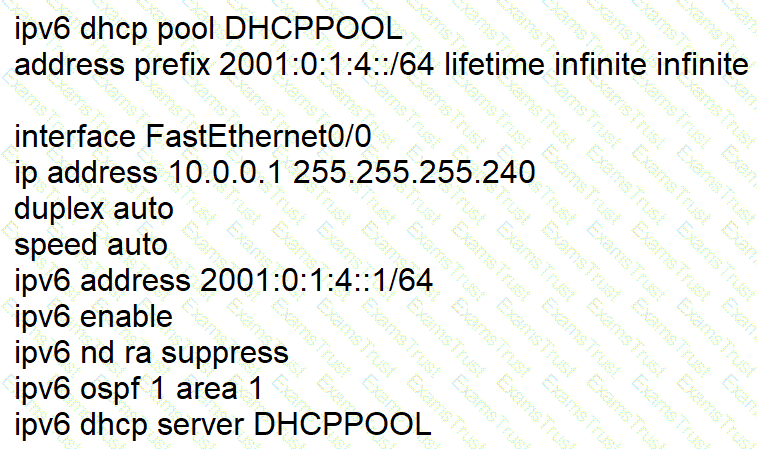
Reachability between servers in a network deployed with DHCPv6 is unstable. Which command must be removed from the configuration to make DHCPv6 function?
A newly Installeo router starts establishing an LDP session from another MPLS router to which it is not directly connected. Which LDP message type responds by target router to the Initiating router using UDP protocol?
How do devices operate in MPLS L3VPN topology?
configuration on the hub router meets this requirement?
Refer to the exhibit.
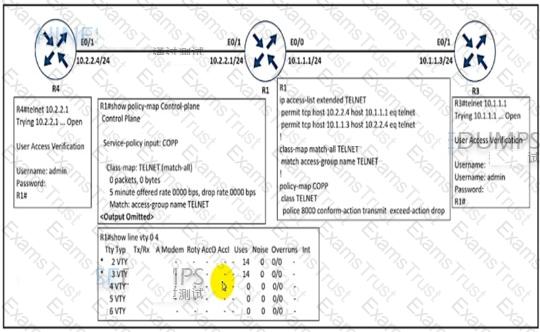
An engineer implemented CoPP to limit Telnet traffic to protect the router CPU. It was noticed that the Telnet traffic did not pass through CoPP Which configuration resolves the issue?
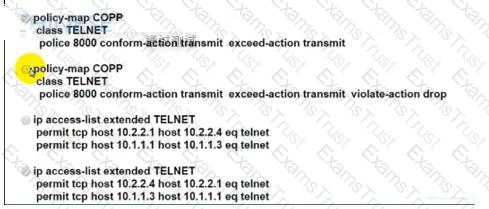
Which two protocols are used by a P router to transfer VPN traffic between PE routers in an MPLS network? (Choose two.)
An engineer failed to run diagnostic commands on devices using Cisco DNA Center. Which action in Cisco DNA Center resolves the issue?
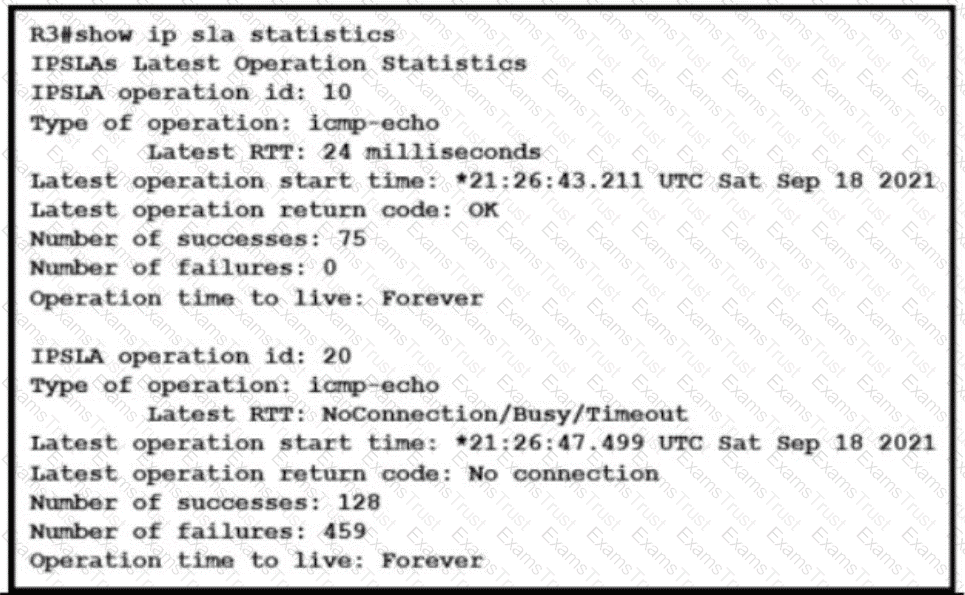
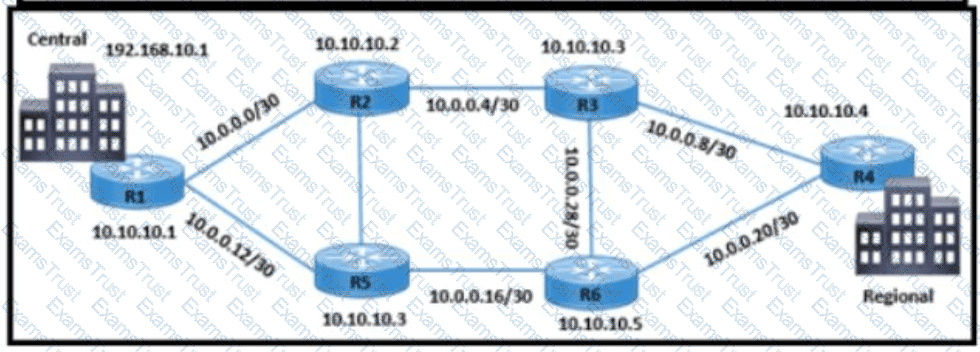
Refer to me exhibit Traffic from R3 to the central site does not use alternate paths when R3 cannot reach 10 10 10 2 Traffic on R3 destined to R4 takes an alternate route via 10 10 10.6 when 10 10 10 4 is not accessible from R3 Which configuration switches traffic destined to 10 10 10 2 from R3 on the alternate path’’
Which feature is used by LDP in the forwarding path within the MPLS cloud?
Refer to the exhibit.
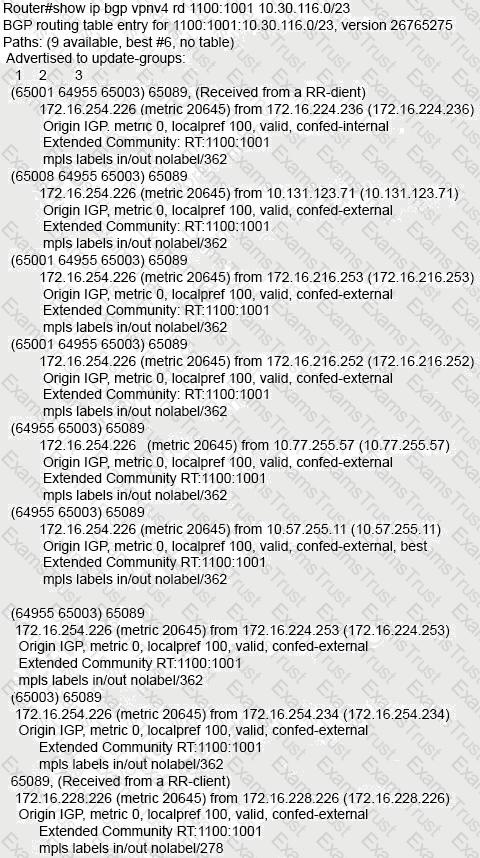
An engineer configured BGP and wants to select the path from 10.77.255.57 as the best path instead
of current best path. Which action resolves the issue?
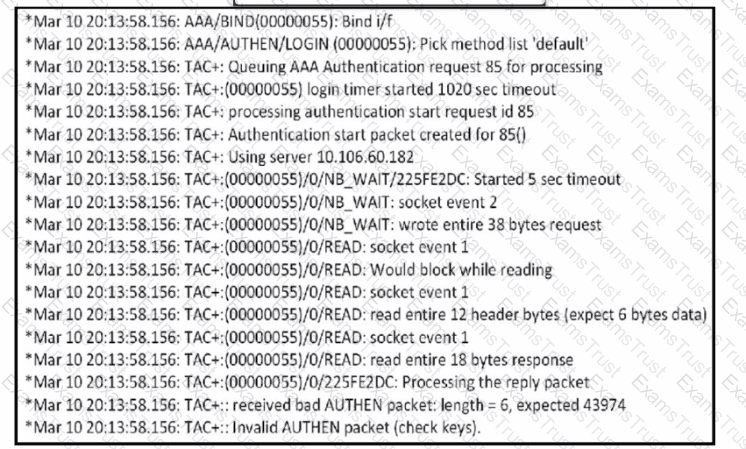
Refer to the exhibit. An engineer must troubleshoot an issue with the aaa authentication that affected the user's login to router R1. Which command allows the configured user to authenticate?
Which feature is required for IPv6 Source Guard to block traffic arriving on the server interface from unknown sources?
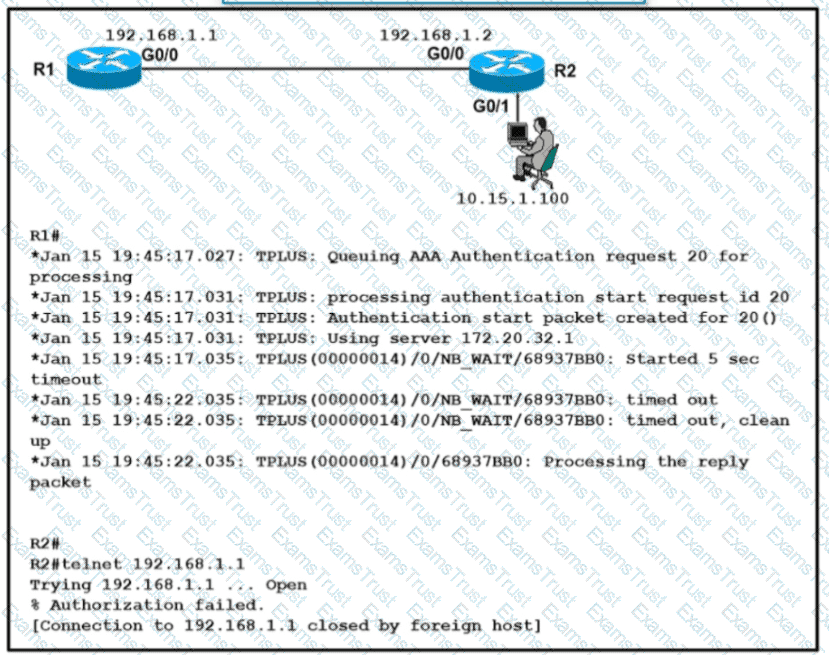
Refer to the exhibit A network engineer is troubleshooting an AAA authentication issue for R1 from R2 When an engineer tries to open a telnet connection to R1 it opens the connection but shows a %Authorization failed error message on the terminal and closes the connection silently Which action resolves the issue?
Which MPLS value is combined with the IP prefix to convert to a VPNv4 prefix?
Refer to the exhibit.
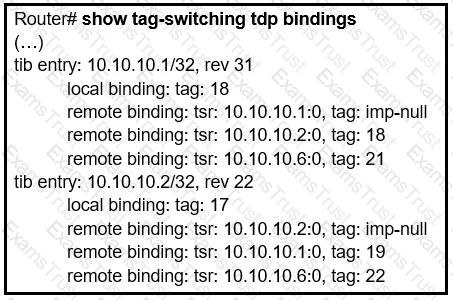
What does the imp-null tag represent in the MPLS VPN cloud?
A network engineer needs to verify IP SLA operations on an interface that shows on indication of
excessive traffic.
Which command should the engineer use to complete this action?
Refer to the exhibit.
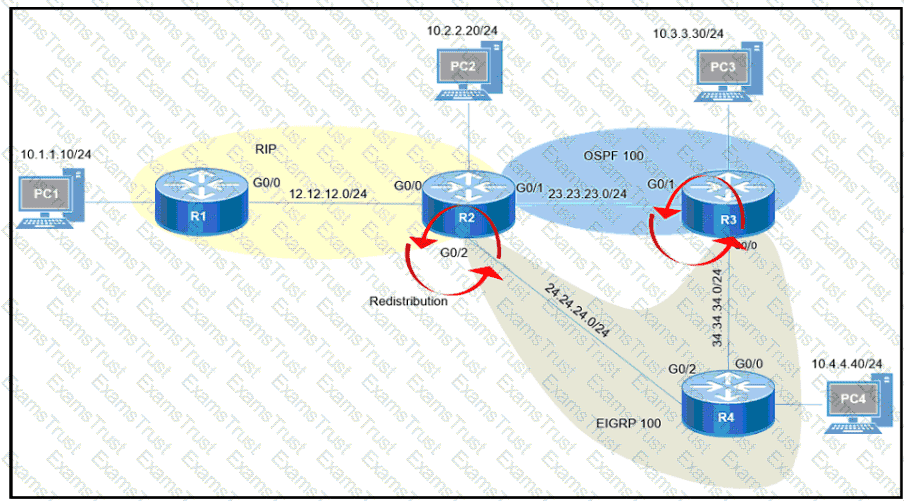
Redistribution is enabled between the routing protocols, and nowPC2 PC3, and PC4 cannot reach PC1. What are the two solutions to fix the problem? (Choose two.)
Which statement about IPv6 RA Guard is true?
Refer to the exhibit.

An engineer is trying to connect to a device with SSH but cannot connect. The engineer connects by using the console and finds the displayed output when troubleshooting. Which command must be used in configuration mode to enable SSH on the device?
Refer to the exhibit.

Which routes from OSPF process 5 are redistributed into EIGRP?
Refer to the exhibit.

Network operations cannot read or write any configuration on the device with this configuration from the operations subnet. Which two configurations fix the issue? (Choose two.)
What is a limitation of IPv6 RA Guard?
Refer the exhibit.
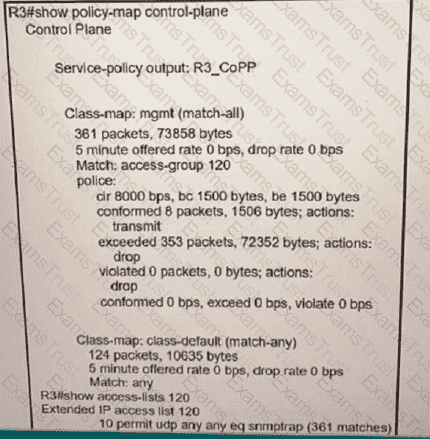
Which action resolves intermittent connectivity observed with the SNMP trap
packets?
Refer to the exhibit.

An engineer has configured DMVPN on a spoke router. What is the WAN IP address of another spoke router within the DMVPN network?
Which protocol does VRF-Lite support?
Which method changes the forwarding decision that a router makes without first changing the routing table or influencing the IP data plane?
Refer to the exhibit.
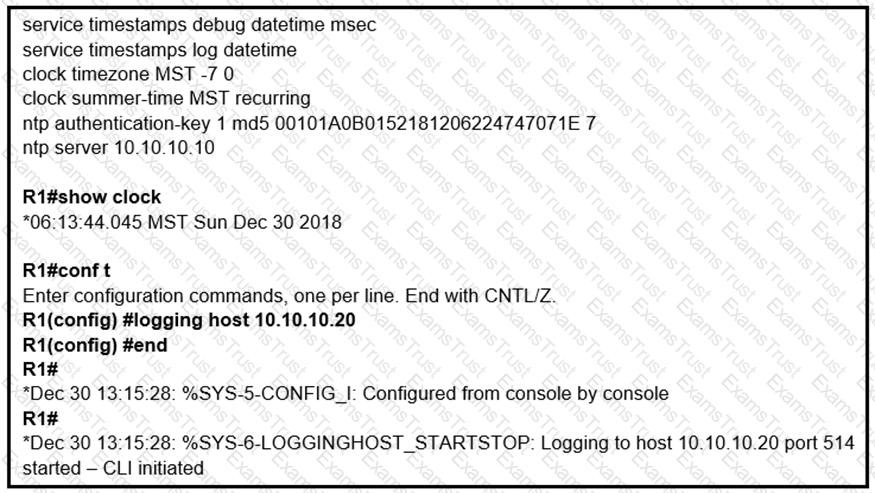
An administrator noticed that after a change was made on R1, the timestamps on the system logs did not match the clock. What is the reason for this error?
Refer to the exhibit.
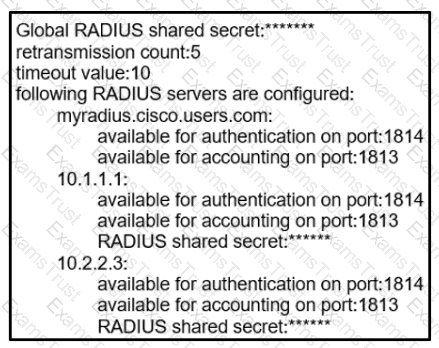
AAA server 10.1.1.1 is configured with the default authentication and accounting settings, but the switch cannot communicate with the server Which action resolves this issue?
What is a limitation of IPv6 RA Guard?
Refer to the exhibit.

Which configuration denies Telnet traffic to router 2 from 198A:0:200C::1/64?
A)

B)

C)

D)


Refer to the exhibit. an engineer is trying to get 192.168.32.100 forwarded through 10.1.1.1, but it was forwarded through 10.1.1.2. What action forwards the packets through 10.1.1.1?
Which label operations are performed by a label edge router?
Drag and drop the OSPF adjacency states from the left onto the correct descriptions on the right.
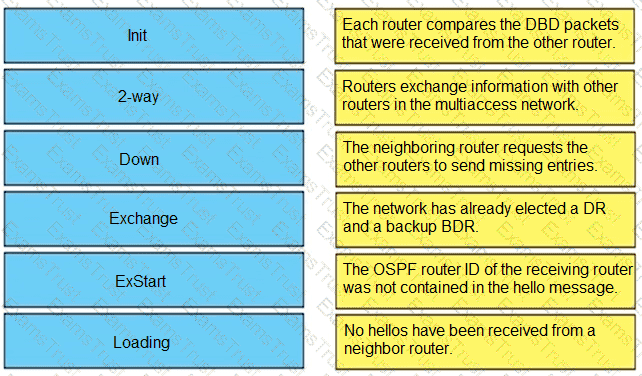
Refer to the exhibit.
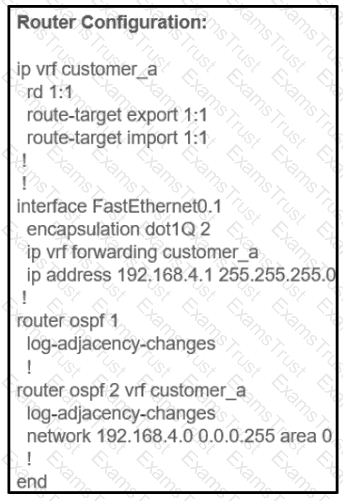
The network administrator configured VRF lite for customer A. The technician at the remote site misconfigured VRF on the router. Which configuration will resolve connectivity for both sites of customer_a?
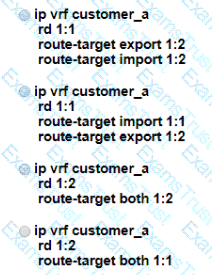
Which command allows traffic to load-balance in an MPLS Layer 3 VPN configuration?
Which configuration adds an IPv4 interface to an OSPFv3 process in OSPFv3 address family configuration?
Drag and drop the operations from the left onto the locations where the operations are performed on the right.
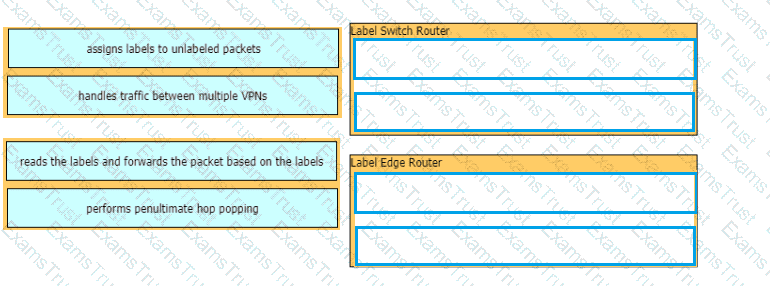
Refer to the exhibit.
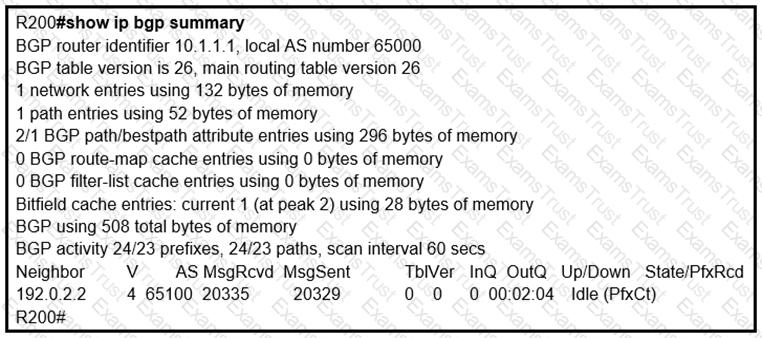
In which circumstance does the BGP neighbor remain in the idle condition?
Refer to the exhibit.
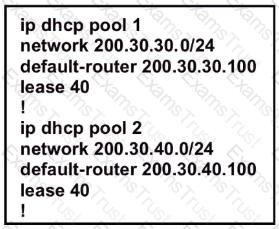
The server for the finance department is not reachable consistently on the 200.30.40.0/24 network and after every second month it gets a new IP address. Which two actions must be taken to resolve this Issue? (Choose two.)
Refer to the exhibit.
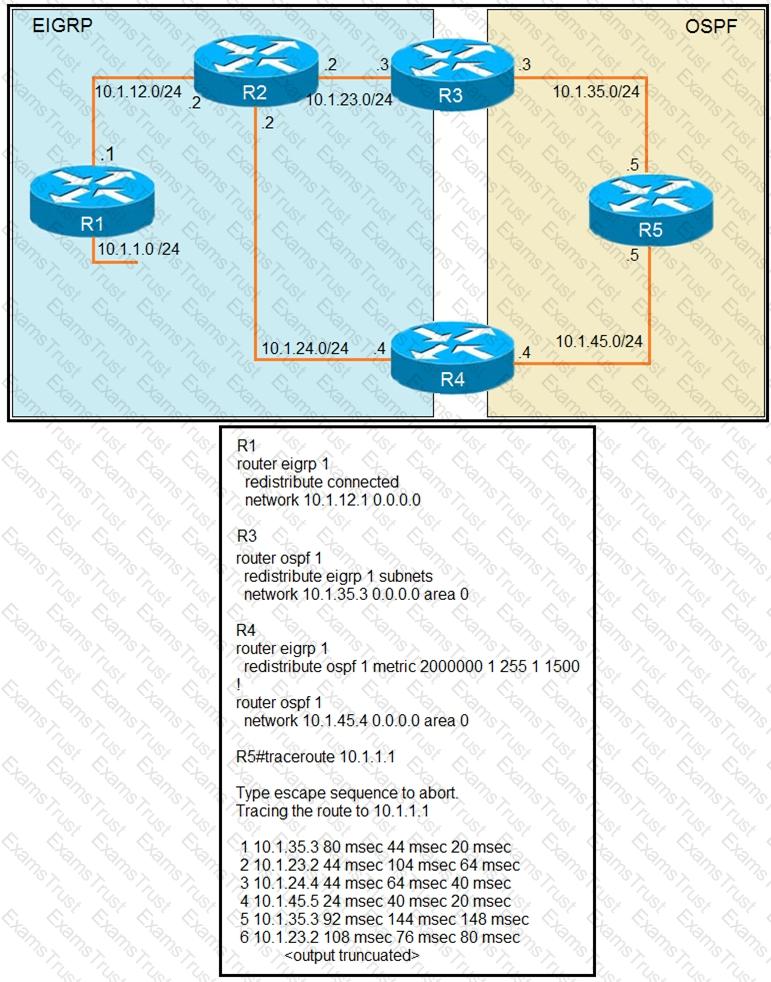
The output of the trace route from R5 shows a loop in the network. Which configuration
prevents this loop?
A)
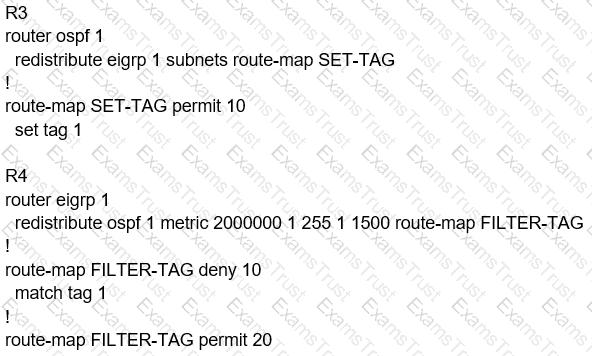
B)
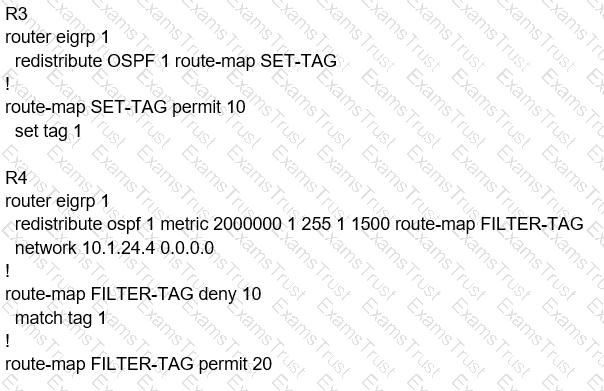
C)
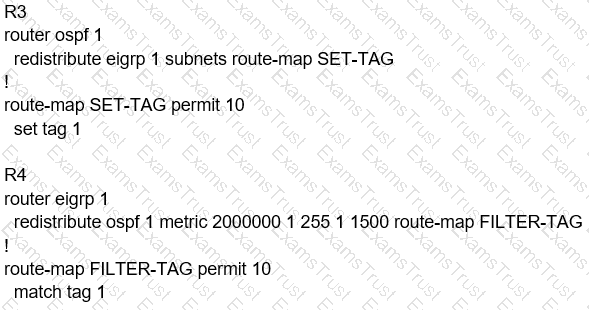
D)
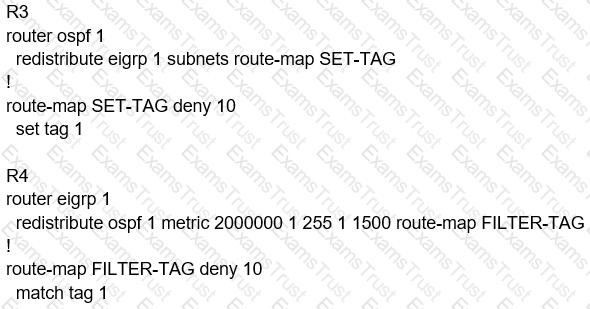
Which protocol does VRF-Lite support?
Which statement about route distinguishers in an MPLS network is true?
An engineer configured a leak-map command to summarize EIGRP routes and advertise specifically loopback 0 with an IP of 10.1.1.1.255.255.255.252 along with the summary route. After finishing configuration, the customer complained not receiving summary route with specific loopback address. Which two configurations will fix it? (Choose two.)

Refer to the exhibit.
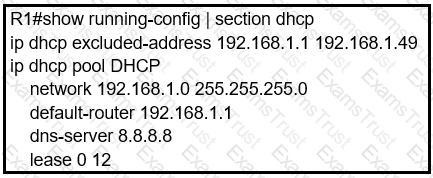
Users report that IP addresses cannot be acquired from the DHCP server. The DHCP
server is configured as shown. About 300 total nonconcurrent users are using this DHCP server, but none of them are active for more than two hours per day. Which action fixes the issue within the current resources?
Which statement about MPLS LDP router ID is true?
Which statement about route distinguishers in an MPLS network is true?
What is an advantage of using BFD?
Drag and drop the DHCP messages from the left onto the correct uses on the right.
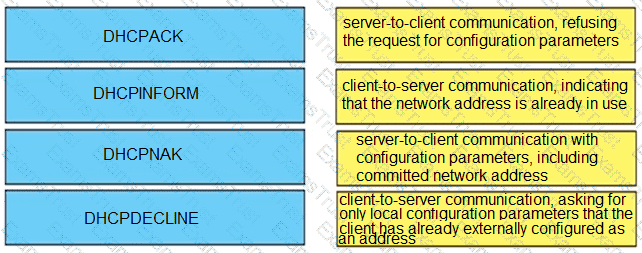
A network engineer is investigating a flapping (up/down) interface issue on a core switch that is synchronized to an NTP server. Log output currently does not show the time of the flap. Which command allows the logging on the switch to show the time of the flap according to the clock on the device?
Which statement about IPv6 ND inspection is true?
Which transport layer protocol is used to form LDP sessions?
Refer to the exhibit.
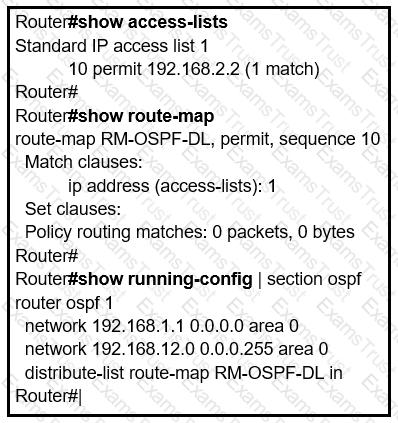
An engineer is trying to block the route to 192.168.2.2 from the routing table by using the
configuration that is shown. The route is still present in the routing table as an OSPF route. Which action blocks the route?
During the maintenance window an administrator accidentally deleted the Telnet-related
configuration that permits a Telnet connection from the inside network (Eth0/0) to the outside of the networking between Friday – Sunday night hours only. Which configuration resolves the issue?
A)
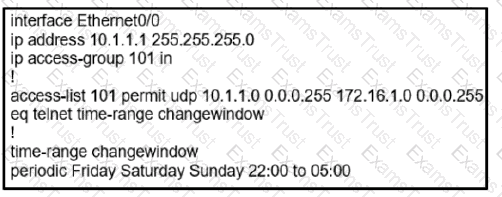
B)
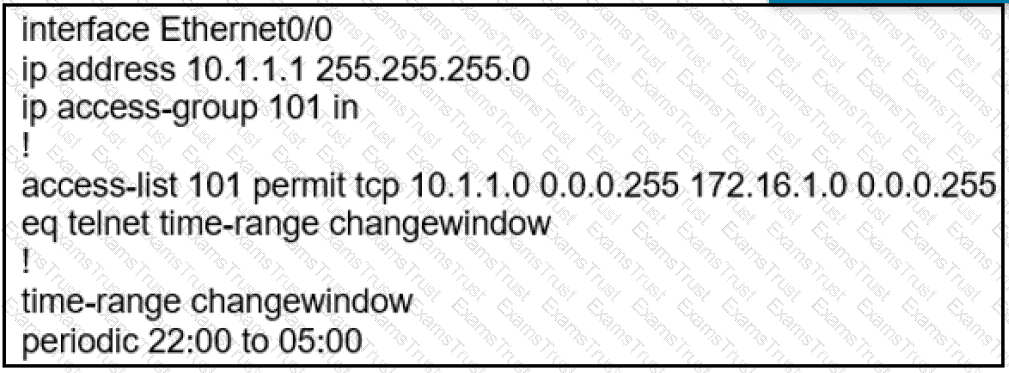
C)
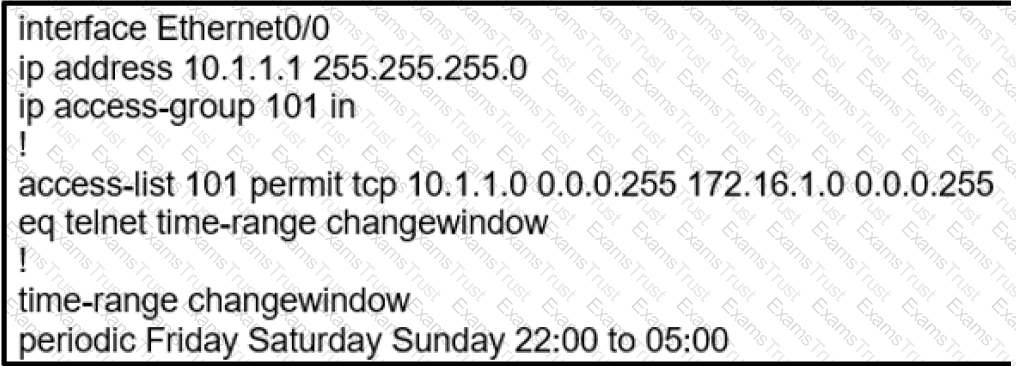
D)

Drag and drop the packet types from the left onto the correct descriptions on the right.

An engineer configured the wrong default gateway for the Cisco DNA Center enterprise interface during the install. Which command must the engineer run to correct the configuration?
Which attribute eliminates LFAs that belong to protected paths in situations where links in a network are connected through a common fiber?
Refer to the exhibit.
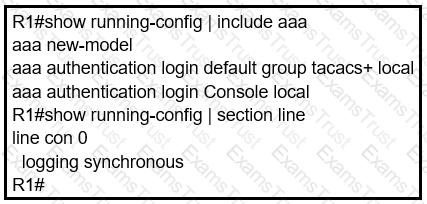
An engineer is trying to configure local authentication on the console line, but the device is trying to authenticate using TACACS+. Which action produces the desired configuration?
Which is statement about IPv6 inspection is true?
Which option is the best for protecting CPU utilization on a device?
An engineer configured a leak-map command to summarize EIGRP routes and advertise specifically loopback 0 with an IP of 10.1.1.1.255.255.255.252 along with the summary route. After finishing configuration, the customer complained not receiving summary route with specific loopback address. Which two configurations will fix it? (Choose two.)

Which two statements about VRF-Lite configurations are true? (Choose two.)
Drag and drop the MPLS VPN device types from me left onto the definitions on the right.

Refer to the exhibit.
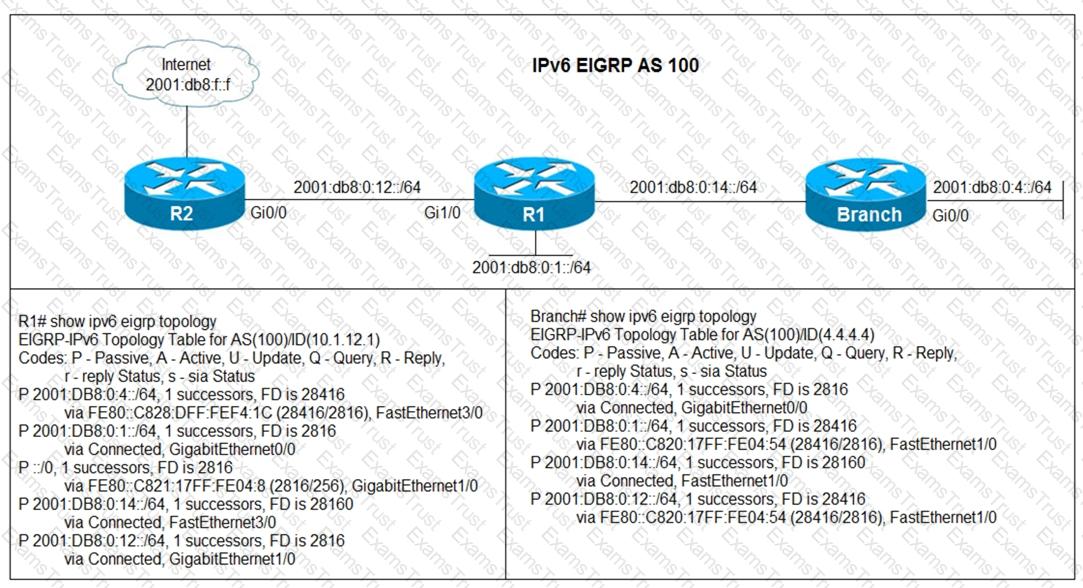
Users in the branch network of 2001:db8:0:4::/64 report that they cannot access the Internet. Which command is issued in IPv6 router EIGRP 100 configuration mode to solve this issue?
Refer to the following output:
Router#show ip nhrp detail
10.1.1.2/8 via 10.2.1.2, Tunnel1 created 00:00:12, expire 01:59:47
TypE. dynamic, Flags: authoritative unique nat registered used
NBMA address: 10.12.1.2
What does the authoritative flag mean in regards to the NHRP information?
Refer to the exhibit.
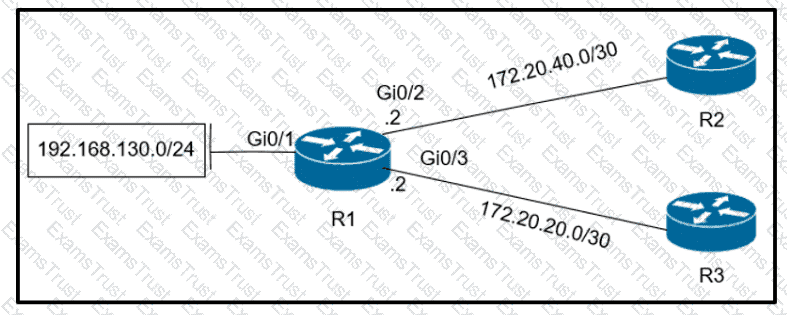
Which configuration configures a policy on R1 to forward any traffic that is sourced from
the 192.168.130.0/24 network to R2?
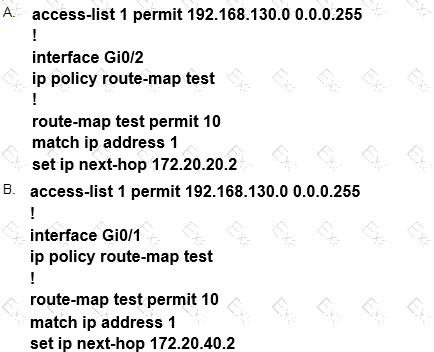
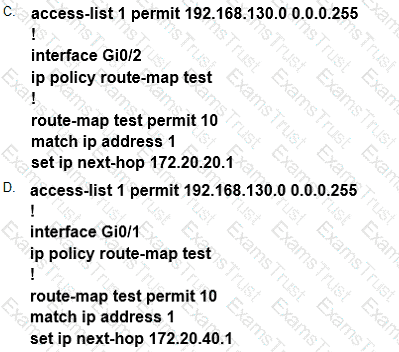
An engineer is configuring a network and needs packets to be forwarded to an interface for any destination address that is not in the routing table. What should be configured to accomplish this task?
Which statement about MPLS LDP router ID is true?
Which two statements about redistributing EIGRP into OSPF are true? (Choose two)
Refer to the exhibit.

Users in the branch network of 2001:db8:0:4::/64 report that they cannot access the Internet. Which command is issued in IPv6 router EIGRP 100 configuration mode to solve this issue?
A network engineer is investigating a flapping (up/down) interface issue on a core switch that is synchronized to an NTP server. Log output currently does not show the time of the flap. Which command allows the logging on the switch to show the time of the flap according to the clock on the device?
An engineer is trying to copy an IOS file from one router to another router by using TFTP. Which two actions are needed to allow the file to copy? (Choose two.)
Refer to the exhibit.
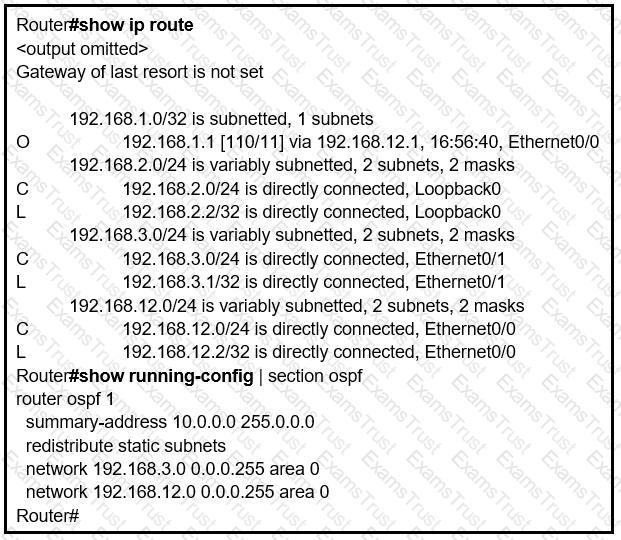
An engineer is trying to generate a summary route in OSPF for network 10.0.0.0/8, but the
summary route does not show up in the routing table. Why is the summary route missing?
Refer to the exhibit.
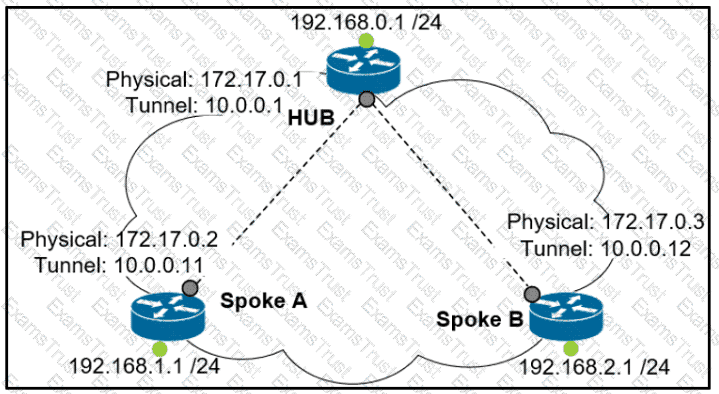
Which interface configuration must be configured on the spoke A router to enable a dynamic DMVPN tunnel with the spoke B router?
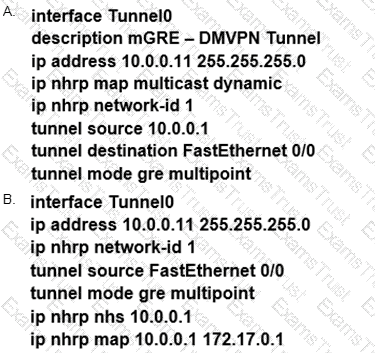
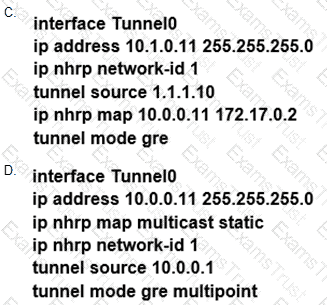
Refer to the exhibit.

An engineer has configured DMVPN on a spoke router. What is the WAN IP address of another spoke router within the DMVPN network?
Refer to the exhibit.
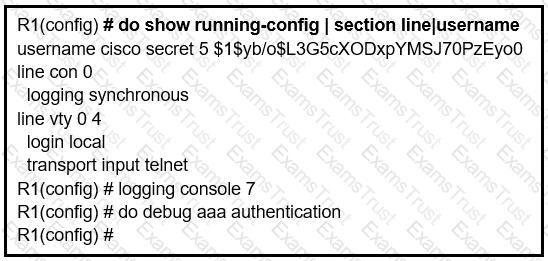
An administrator that is connected to the console does not see debug messages when
remote users log in. Which action ensures that debug messages are displayed for remote logins?
What is the output of the following command:
show ip vrf
Refer to the exhibit.
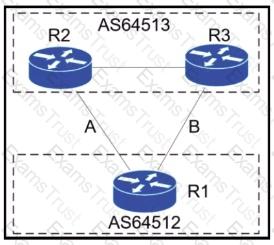
A network engineer for AS64512 must remove the inbound and outbound traffic from link A during maintenance without closing the BGP session so that there ............ a backup link over link A toward the ASN. Which BGP configuration on R1 accomplishes this goal?
A)
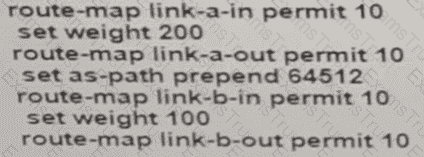
B)
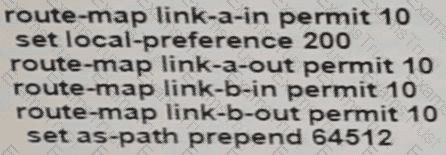
C)

D)
